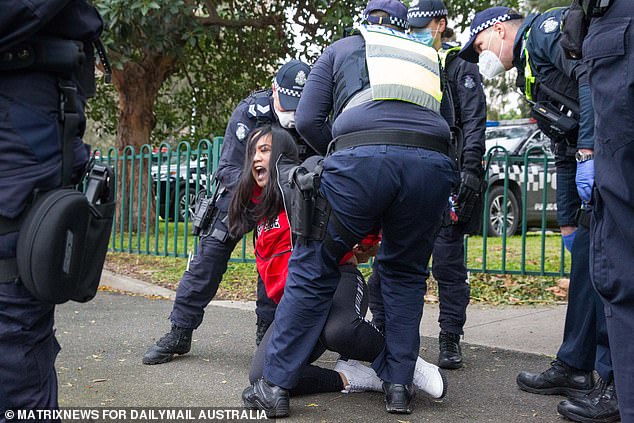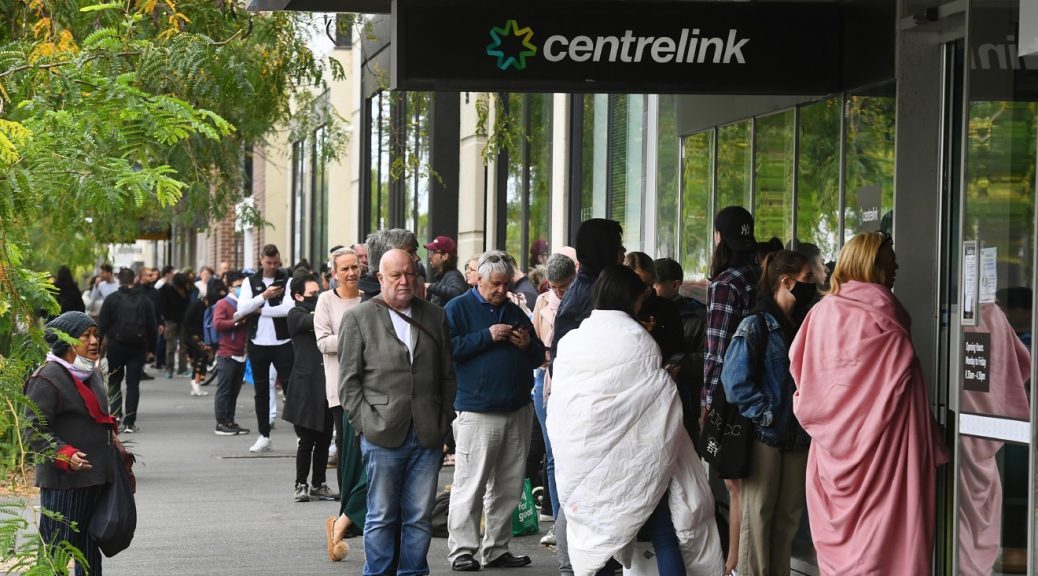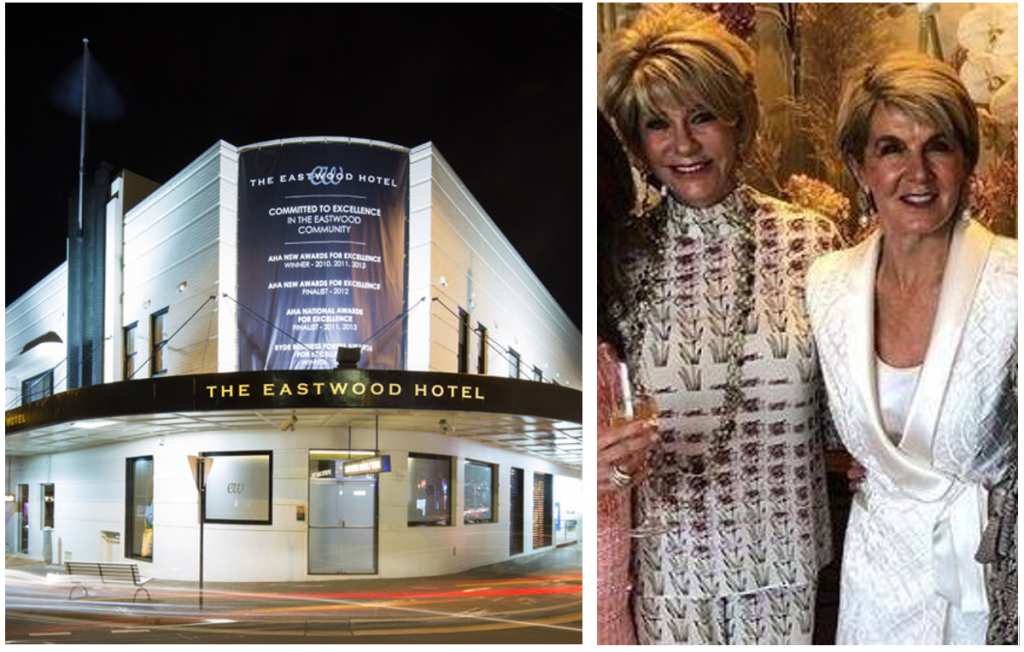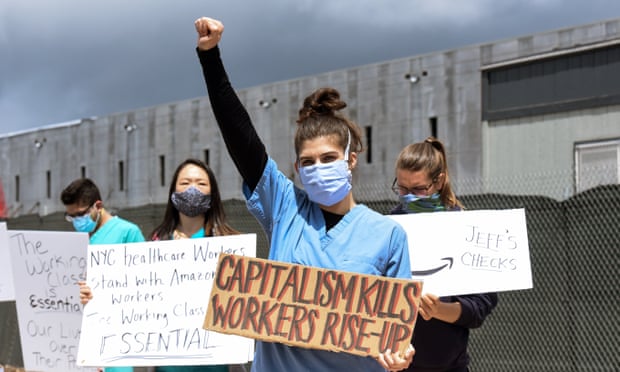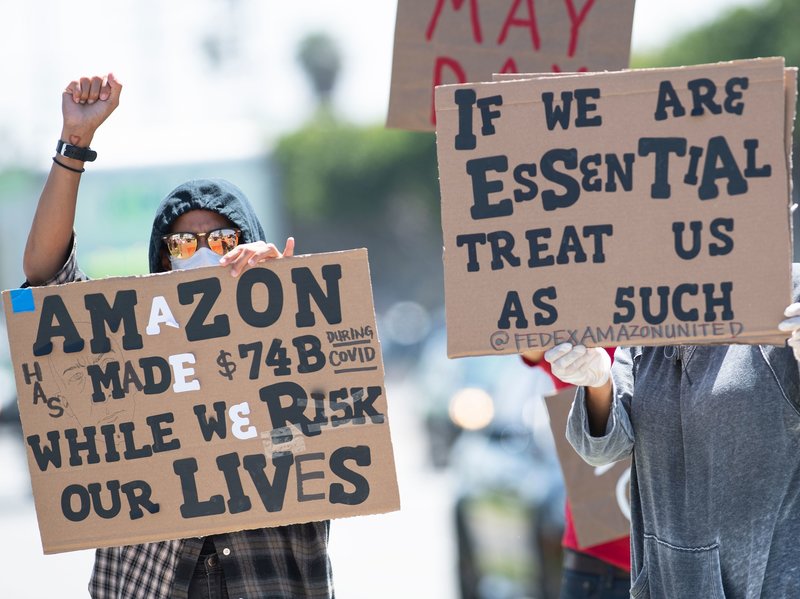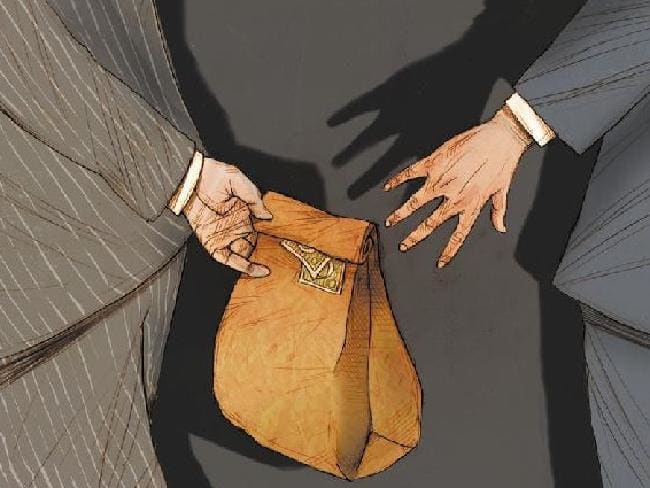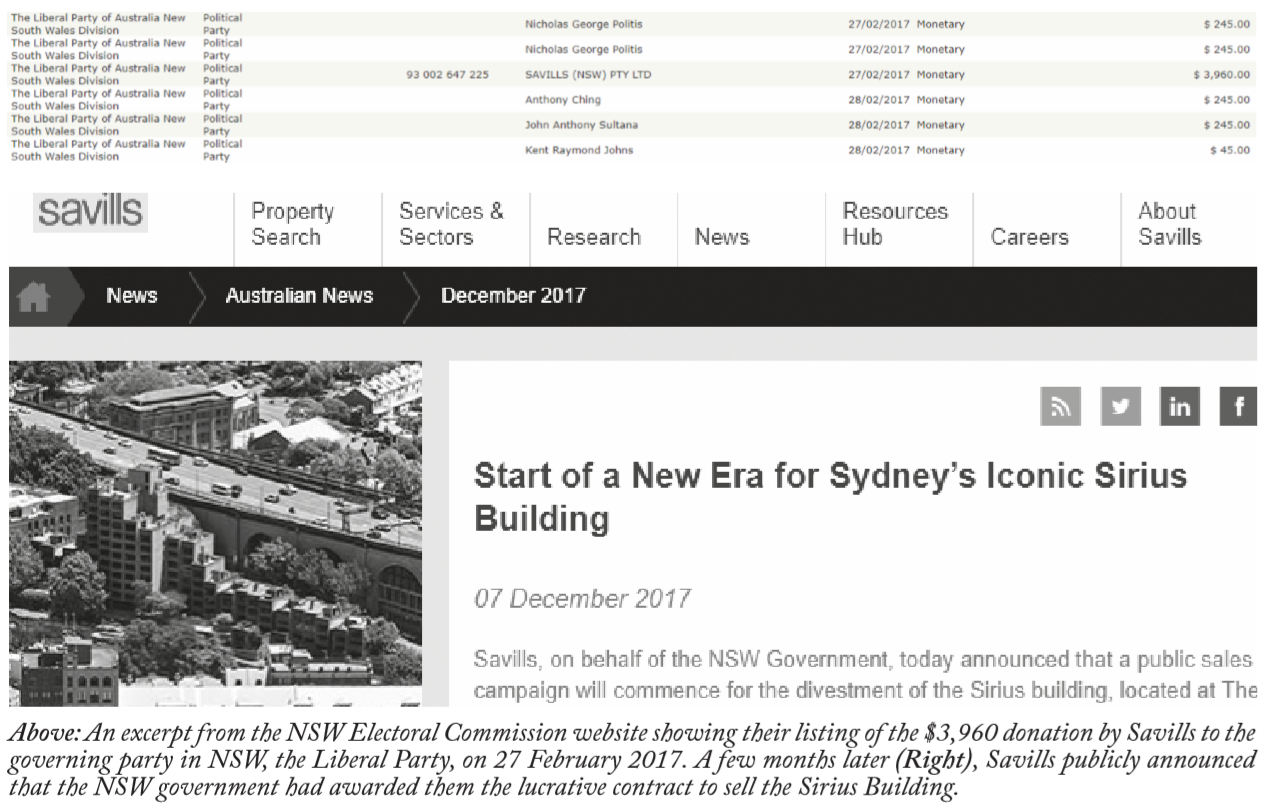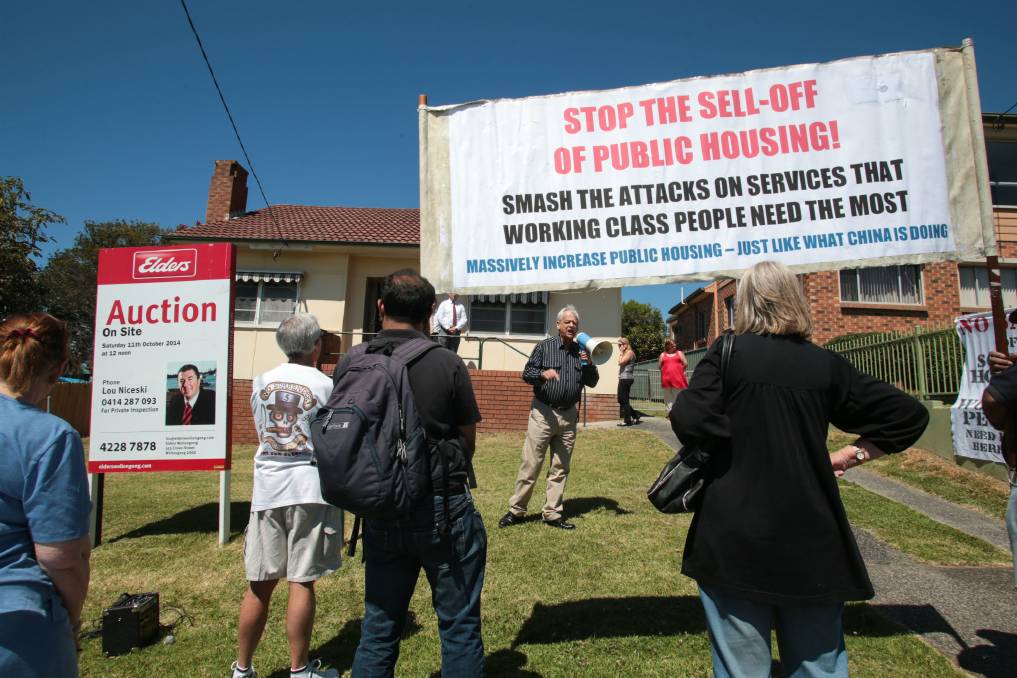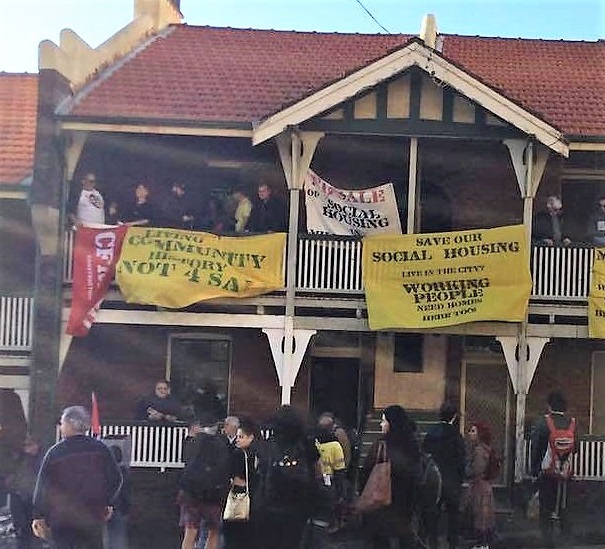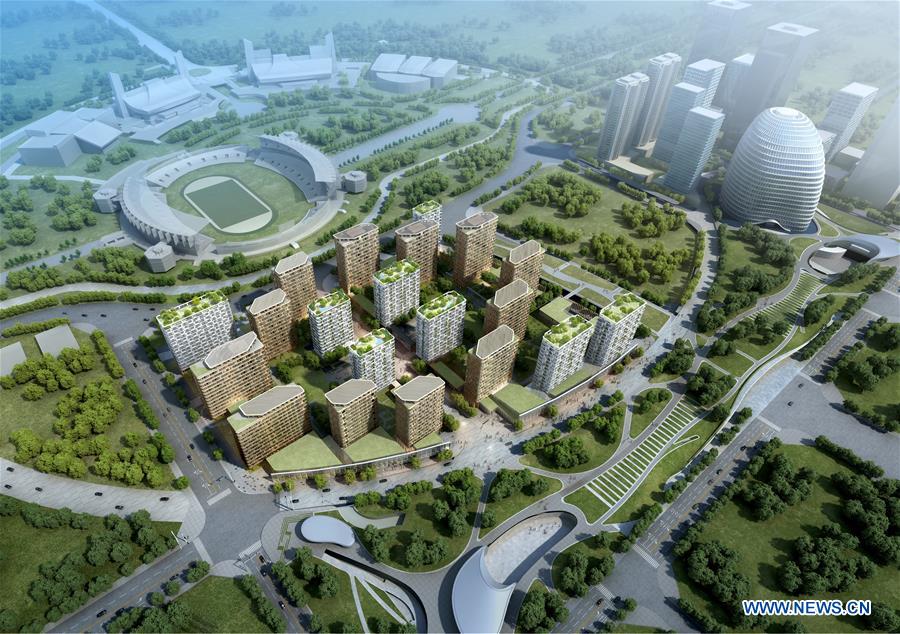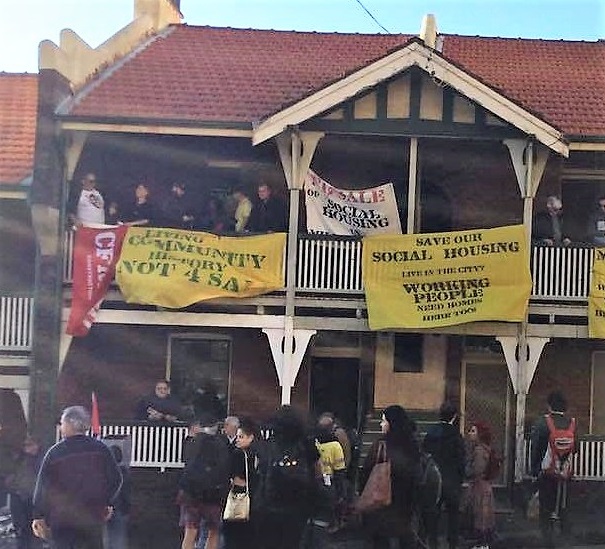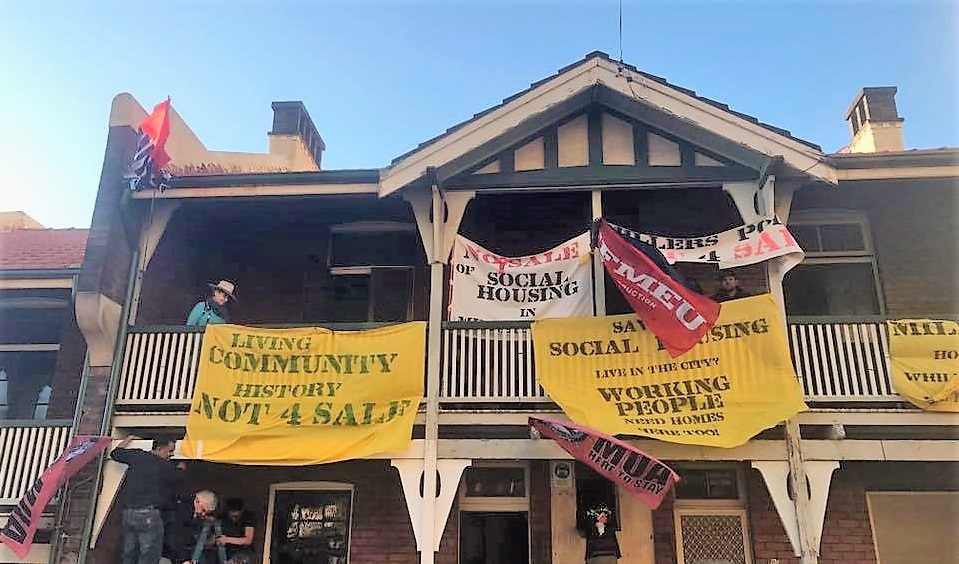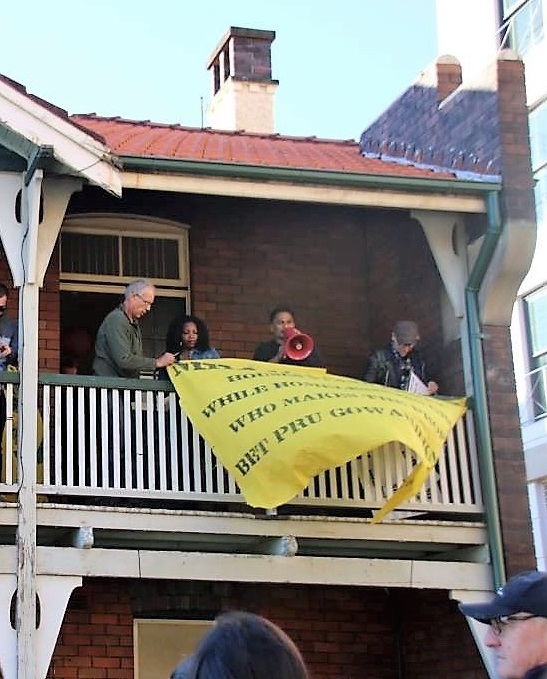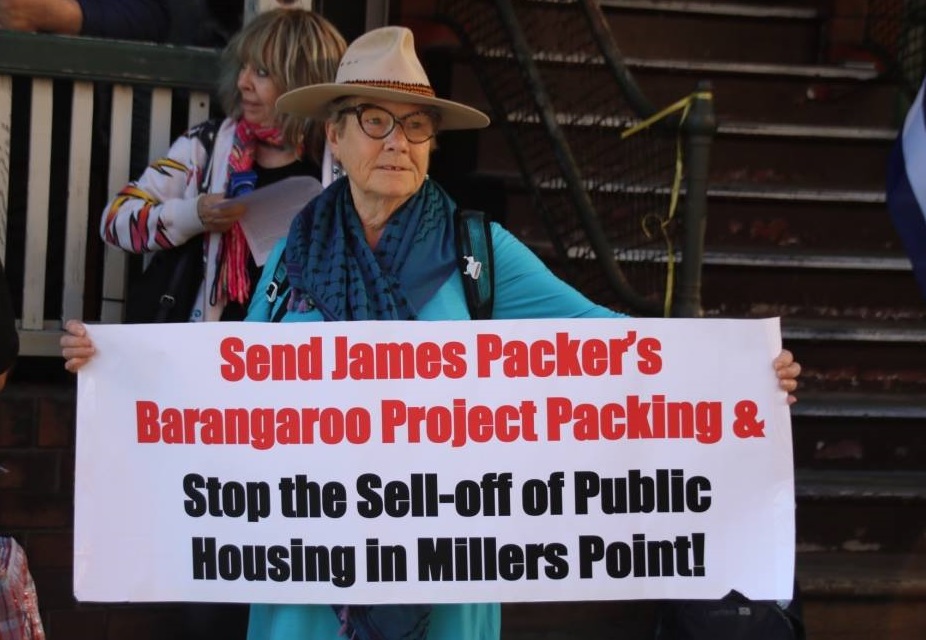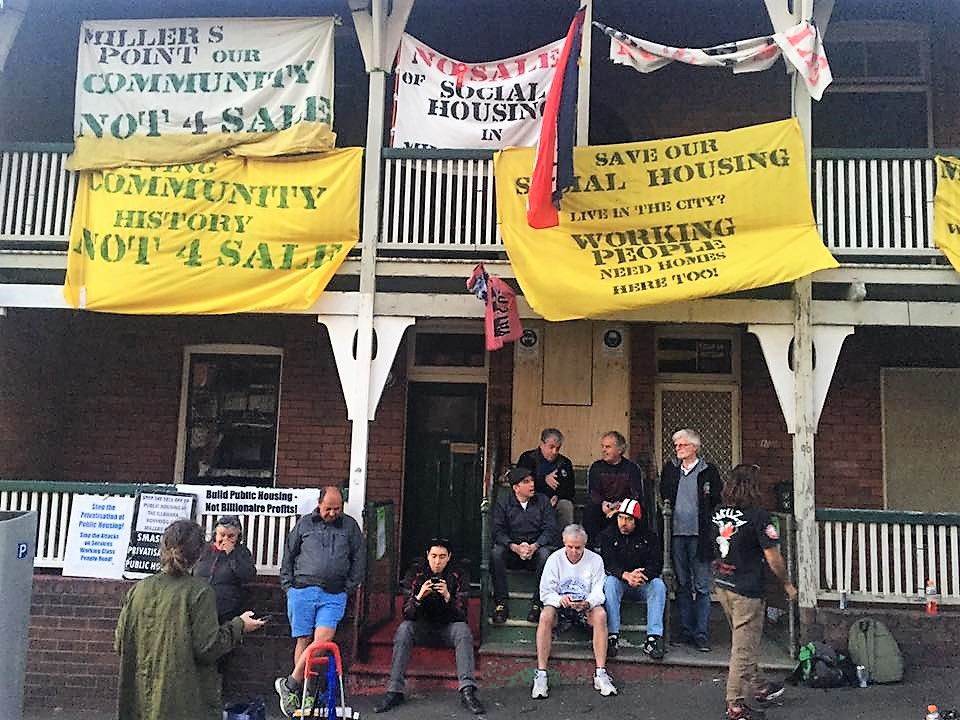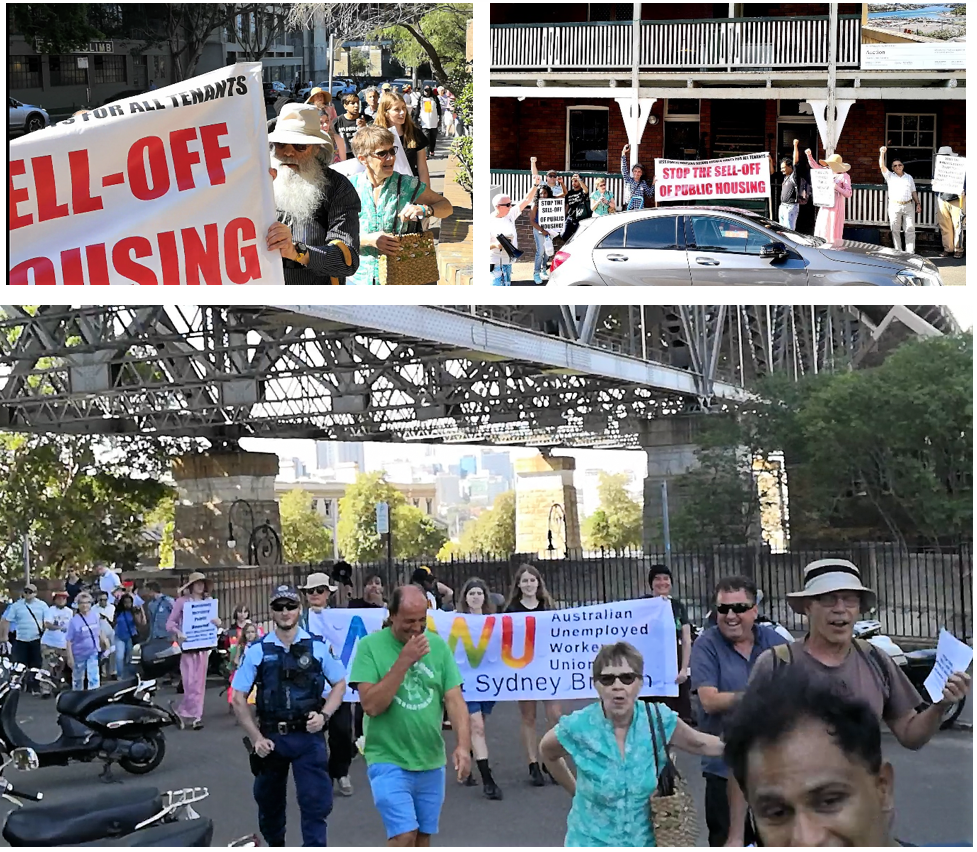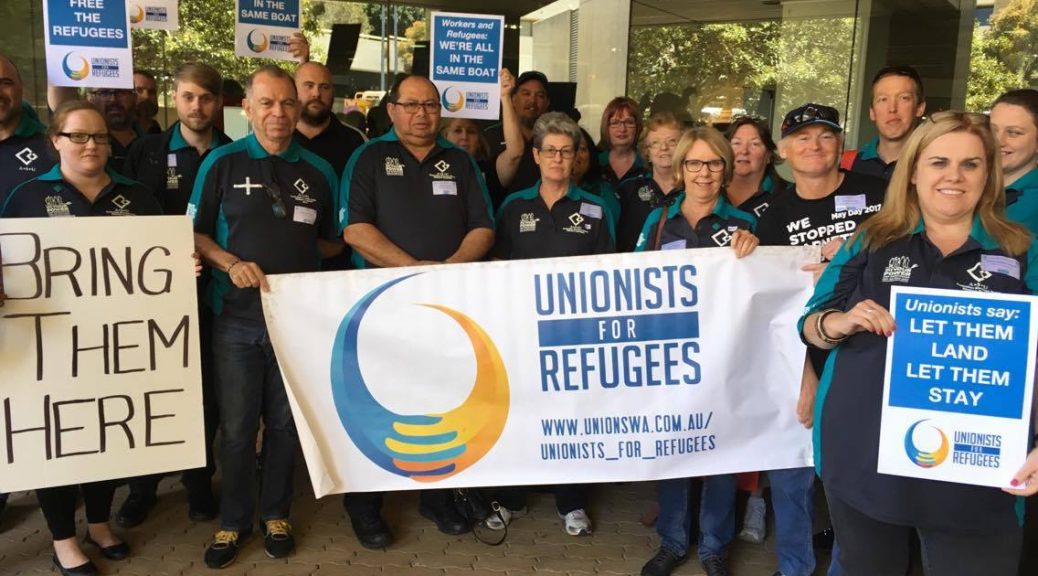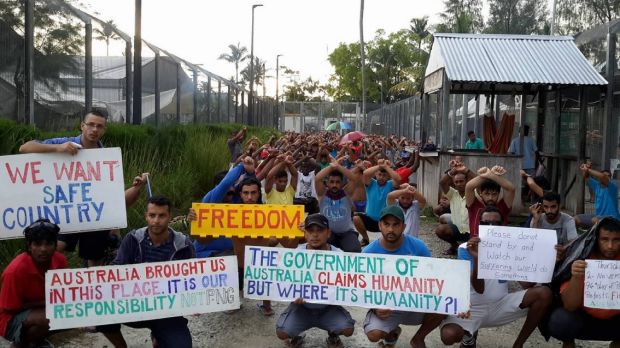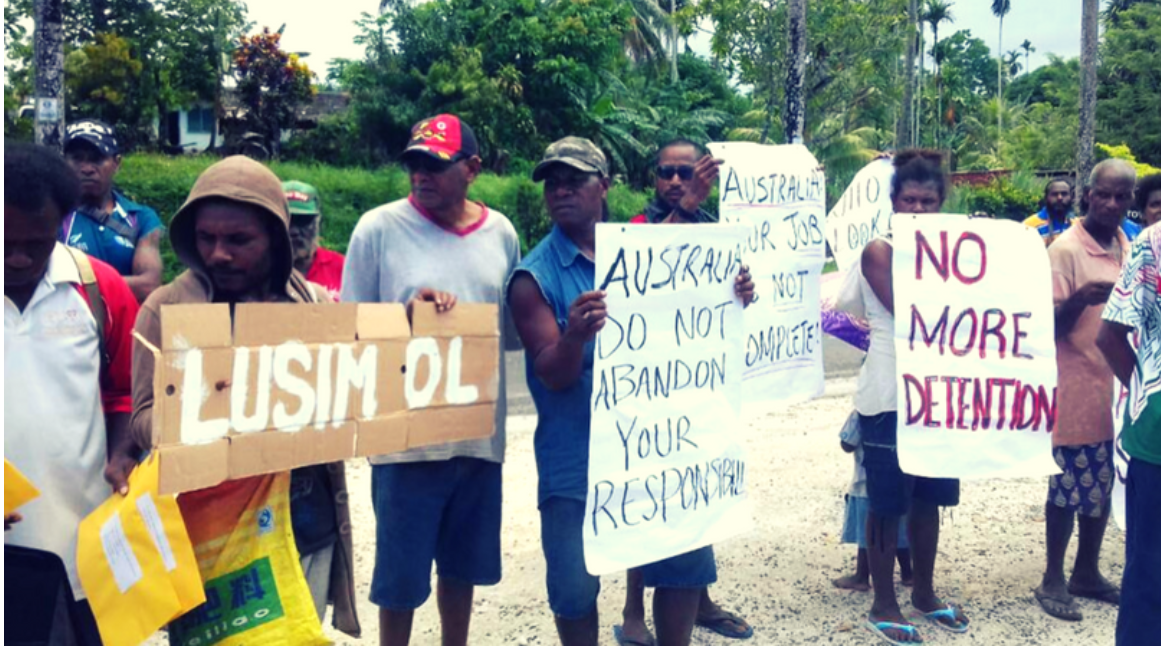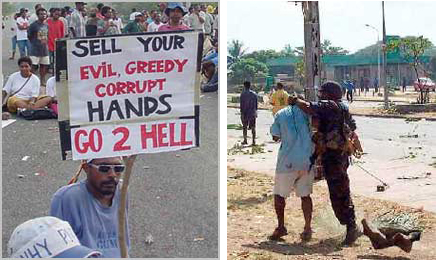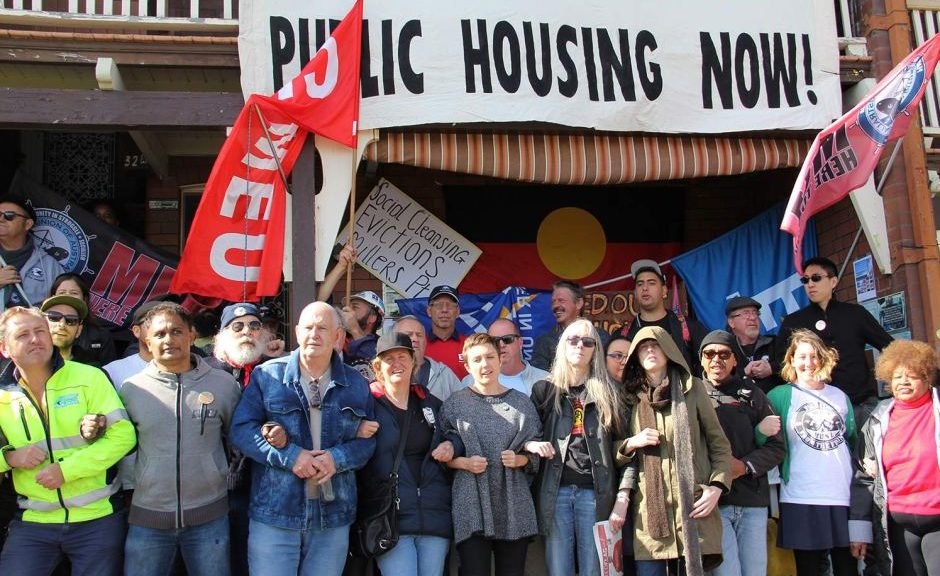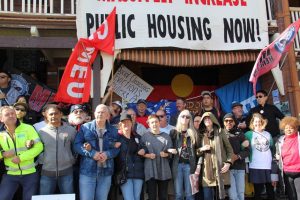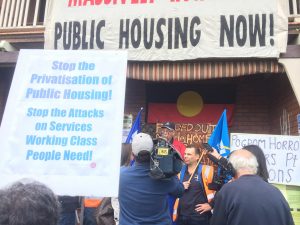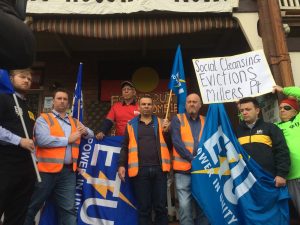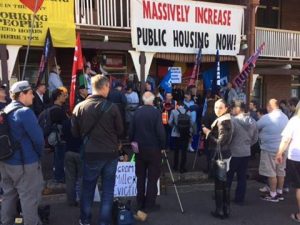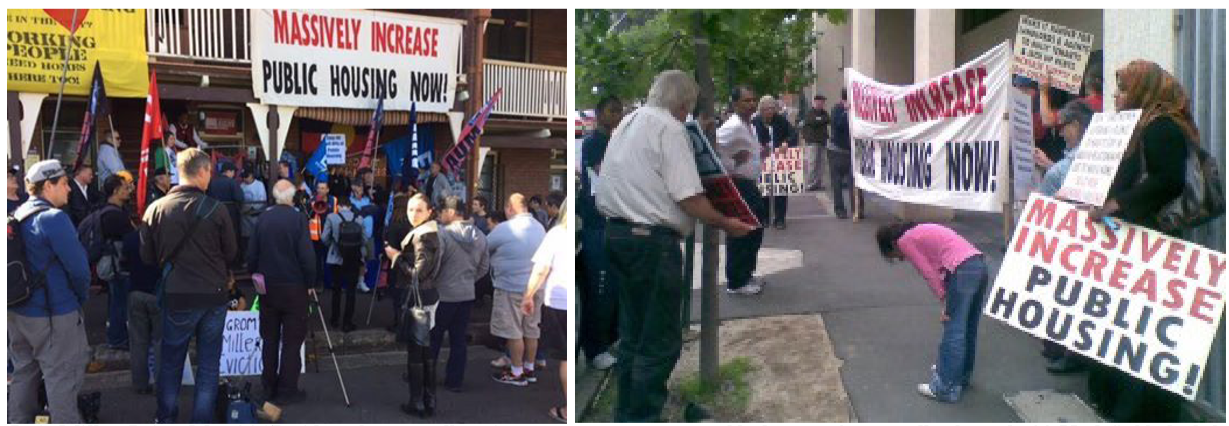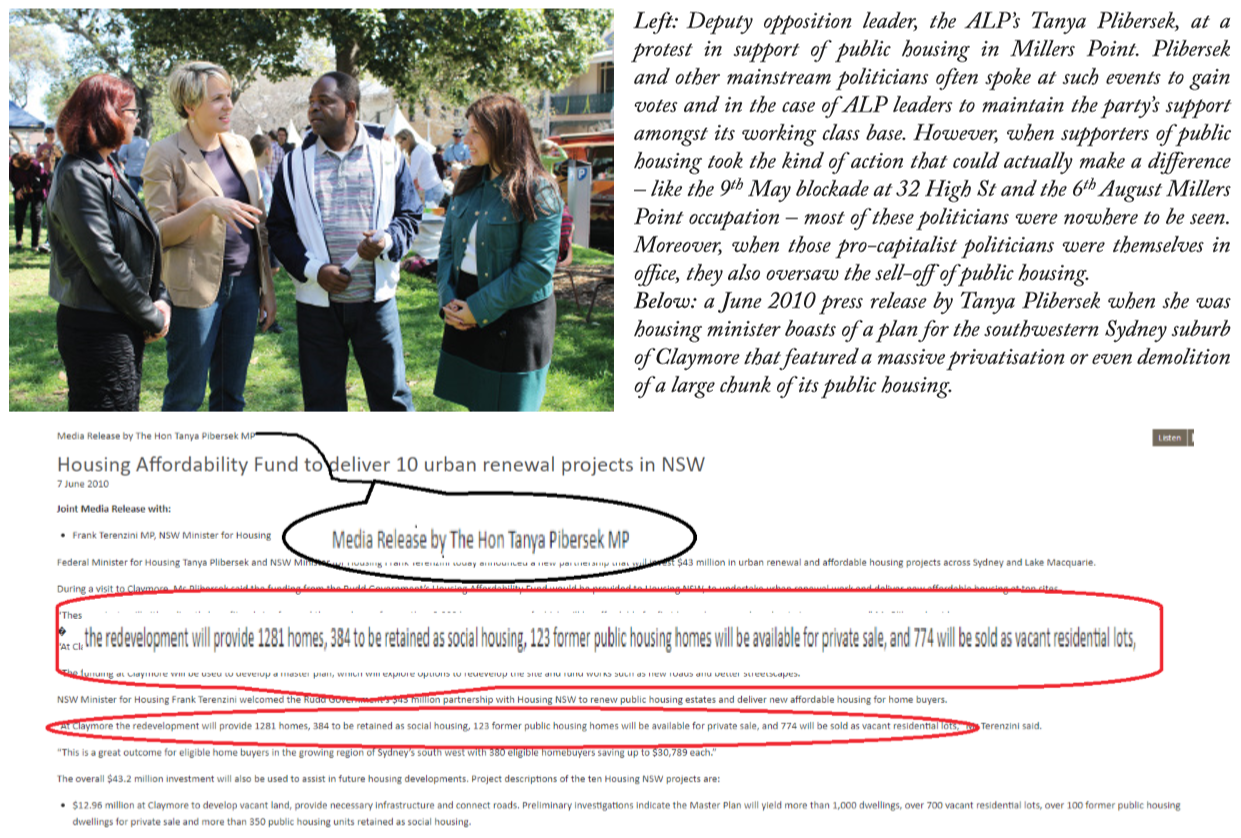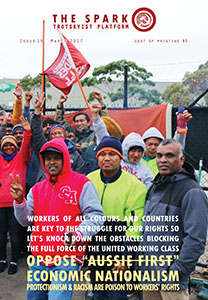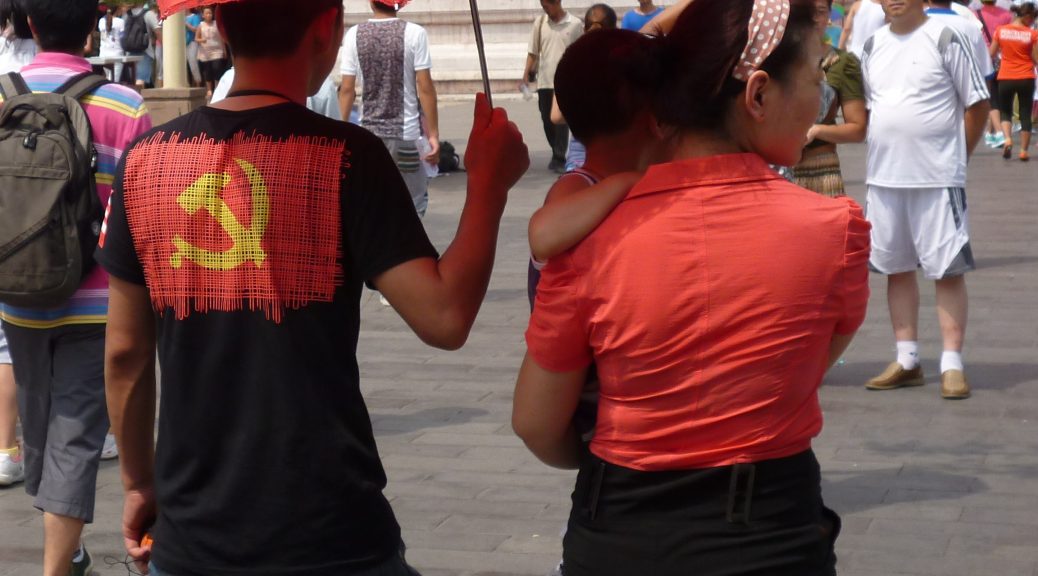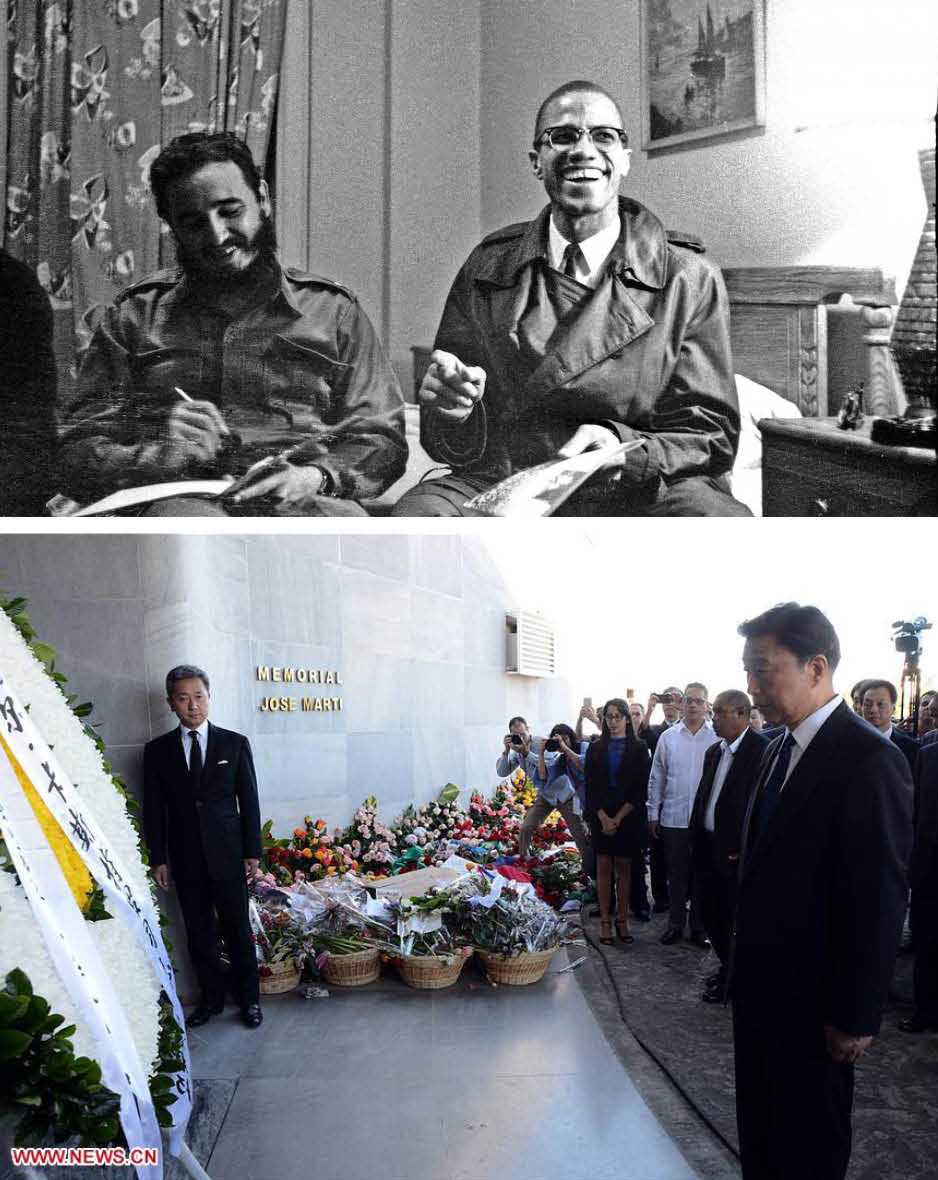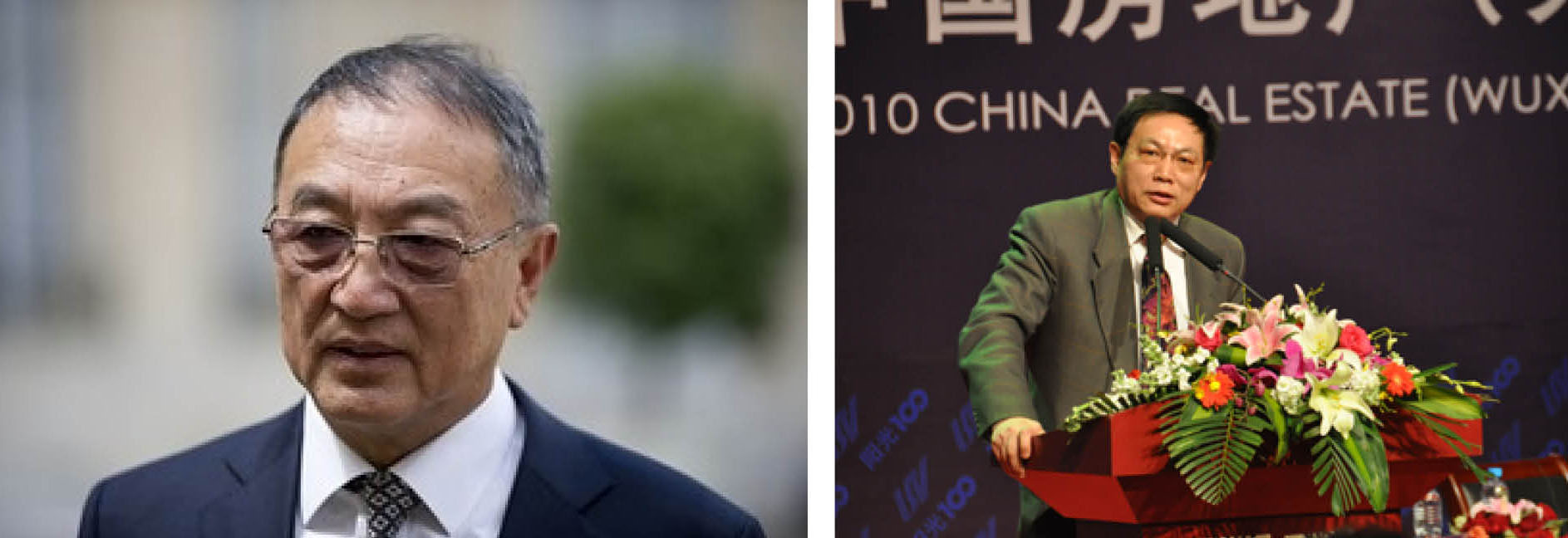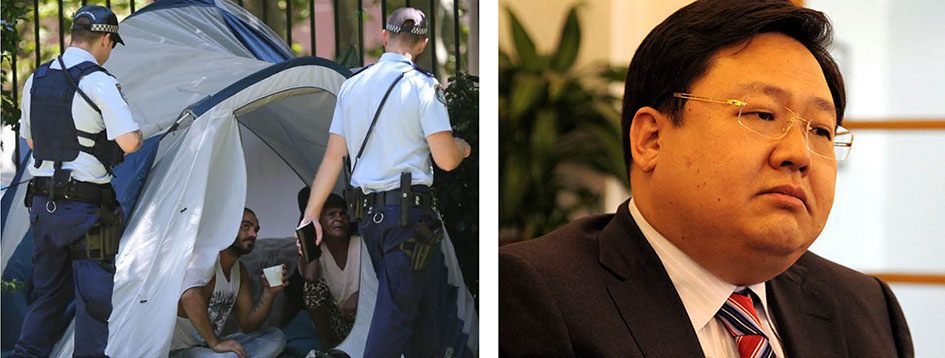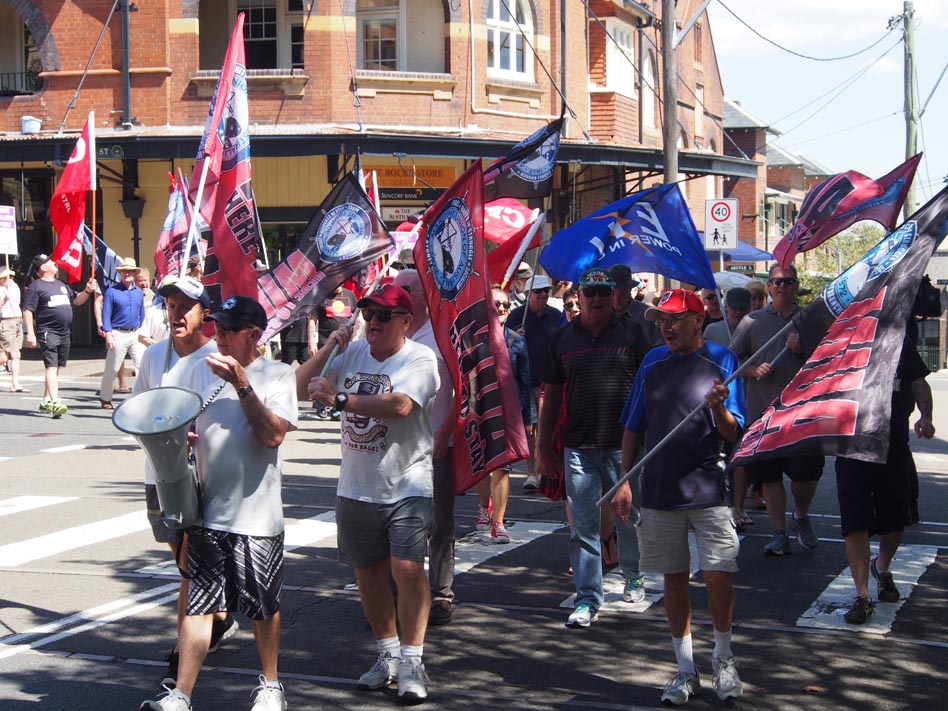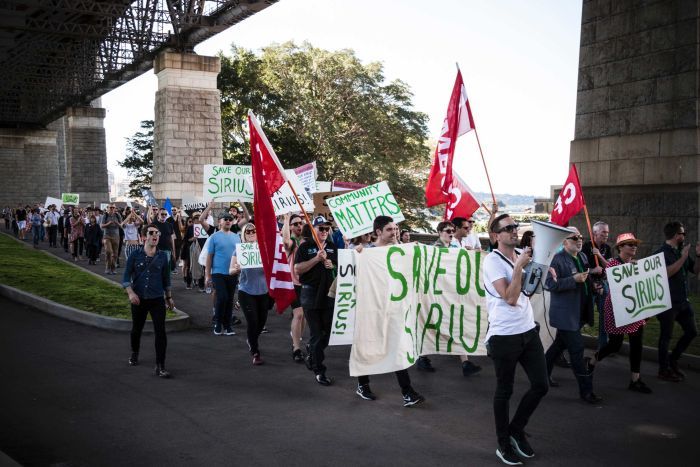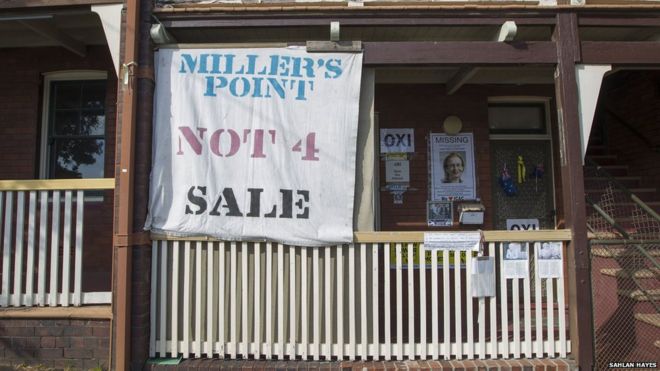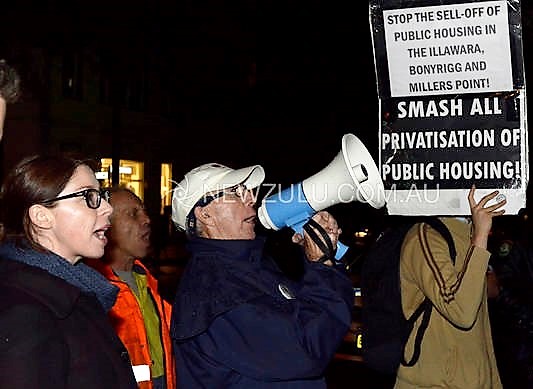Photo Above: Police roughly arrest a mother for attempting to visit her children who are residing in one of Melbourne’s locked down public housing towers.
A Deadly Tale of Nationalist Arrogance,
Capitalist Greed,
Cold War Fear Mongering and Dog Whistling to Racism
Racism, Capitalism and
Pandemic in Australia
- “First World” Arrogance and Callous Indifference for the Poor, Ill and Elderly
- “Herd Immunity” Means Culling of the Herd
- The Victorian ALP Government’s Cruelly Implemented Lockdown of Public Housing Tenants
- U.S., Britain, Australia and the Inherent Deficiencies of the Capitalist System
- The Politically Motivated Selection of Travel Restrictions Caused the Death of Scores of Australians
- All the Ugliness Comes Out
- For United Working Class Struggle!
9 July 2020: In just the last week, Australia has had well over a thousand people newly infected with COVID-19. The coronavirus is spreading quickly in Melbourne’s working class suburbs. Migrant workers, in particular, often work in crucial frontline roles – as supermarket workers, cleaners, transport workers, health sector employees etc – where it is harder to protect oneself from catching infectious diseases. Rather than responding to the virus spread in migrant working class areas with compassion and support, the Australian ruling class, from its politicians to its media to its police enforcers, have responded with stigmatisation and cruelty.
Worldwide, the current pandemic has killed over half a million people. Such infectious diseases have caused immense suffering to humans since time immemorial. The H1N1 influenza A pandemic that started in the latter months of World War 1 killed between 21 million and 100 million people! That outbreak “originated” in the U.S. and was then carried by infected troops to Europe [1]. The virus was colloquially known as the “Spanish Flu” but this was only because Spain, a neutral country during the war, did not censor reports on the epidemic.
The emergence of a disease that causes widespread death is a natural disaster that could “originate” anywhere. Naturally, on sheer probability, a disease is more likely to start in one of the countries with the largest populations. However, speaking about “where a disease started” is a misnomer. For new viruses and bacteria are merely mutations of previously existing ones. These organisms are constantly evolving. Some animal-hosted viruses may jump from animal to human in a form already quite adapted to a human host, while others may mutate within humans for long periods before becoming infectious. Therefore, speaking about “where a virus started” depends on how far you want to go back in time.
The outbreak of an infectious disease is impossible to stop at its source. Before the first people infected become ill enough to seek treatment they would have likely passed the disease onto others. Moreover, before there is enough cases for doctors to notice the new threat, the disease would have spread still further. This is especially the case for COVID-19, which while being truly deadly for many only produces mild symptoms in most. Once there is a spread of a new disease, the amount of suffering that it causes, as with any natural disaster, depends much on the efforts of humans and our social systems. As a result, the level of suffering caused by the new virus has varied greatly from country to country.
All the above indicates just how unscientific was the right-wing Australian government’s proposal for an international “inquiry” focused solely on the “origin” of COVID-19. Those issues are of scientific interest. However, the far more important issue is that part of the pandemic that can actually be controlled: that is once there was an initial spread how effective were the measures taken to contain it. Fortunately, the focus of the government’s proposal was in fair part rejected by most countries [2]. Instead, the World Health Assembly unanimously adopted a resolution to investigate the overall response to the pandemic rather than on only its origins. The Australian government’s rebuffed emphasis, which had been fully backed by the ALP “opposition,” was not simply a scientific error. It was politically motivated. Their aim was to help themselves and their U.S. allies to score propaganda points against China, the world’s largest socialistic country, where they claim that the virus “originated” from (although recent evidence may suggest otherwise). They had another aim too. By getting everyone obsessed with the “origins” of the virus, Australia’s rulers wanted to divert people from the fact that their own response to the pandemic has been deeply flawed and that of their key allies, the U.S. and Britain, downright catastrophic [3] [4].
Australian authorities endlessly boast about their “successful” response to the coronavirus threat. However, their boast is true only in comparison with the likes of the U.S., Brazil, Britain, Russia, Sweden and India which have had really failed responses. Australia’s death toll per resident from the pandemic is now 30% higher than China’s despite Australia having had the huge advantage of having time to prepare for the arrival of the virus [5] [6]. Furthermore, while China has thus far avoided a large second wave, Australia’s second biggest city is experiencing just such a virus resurgence. Moreover, in comparison with some countries with more difficult circumstances, including many of those that share borders with China and, thus, were more vulnerable to a virus spread from Wuhan, the suffering caused by COVID-19 is far worse in Australia. It is important to note that five of the countries that share borders with China have thus far had no deaths from COVID-19 whatsoever!
Three of these countries sharing borders with China and currently having no COVID-19 deaths are socialistic countries like China itself. Those countries are Vietnam, North Korea and Laos [7] [8] [9]. The socialist system, in which the key means of production are under collective ownership, enables resources to be pooled to respond to natural disasters. Nevertheless, two of the countries bordering China that currently have had no coronavirus deaths – Mongolia and Bhutan [10] [11] – are not socialistic. This shows that, although a country burdened by capitalist rule would not be able to replicate the response that socialistic China made had they been faced with similar circumstances of a previously unknown disease spreading quickly, even a capitalist country could, with correct policies, make an effective response provided they had forewarning that the virus was on its way, as Australia certainly did. Other lower income countries have also responded more successfully to the virus than Australian authorities have. Rwanda has had just three COVID-19 deaths so far compared to the 106 in Australia [12].
That COVID-19 has not, at this time, devastated Australia to the extent that it has the U.S and Britain is more due to this country’s geography rather than good management. Firstly, Australia is an island and islands are a lot easier to implement quarantine measures in. Thus, many island nations have fared comparatively well during this pandemic. Many of Australia’s island neighbours have not had a single death from the coronavirus including Fiji and New Caledonia [13] [14]. The second factor that should have made it relatively easy to deal with a virus threat here is the fact that Australia has one of the world’s lowest population densities. This matters, because when people are living more tightly together diseases naturally spread more quickly. Thus, Thailand faced difficult circumstances because not only was she the second country to report a coronavirus case, Thailand has a population density that is 39 times that of Australia. Yet Thailand has had only slightly over half the number of deaths as in Australia, despite having nearly three times Australia’s population [15].
“First World” Arrogance and Callous Indifference for the Poor, Ill and Elderly
The Australian government exaggerated their capacity to deal with the pandemic. On February 28, Morrison insisted that because his government had “acted quickly”, “there is no need for us to be moving towards not having mass gatherings of people” [16]. It took a whole 50 days after Australia had reported its first case before the government implemented any social distancing measures [17] [18]. As professor at the University of New South Wales, Bill Bowtell said of the government’s response [19]:
“Let’s cut to the chase, they were warned 12 weeks ago by WHO and others what was coming. They did not accumulate test kits. They did not accumulate the necessary emergency equipment. They did not undertake a public education campaign. They gave no money to science, no money to research, no money to the International Vaccine Institute, no money to WHO. They diligently did not do anything useful.”
So what drove the leaders of Australia and other “like-minded countries” to be so tardy in responding to COVID-19? Arrogant over-confidence is part of the story. On March 11, still four days before any social distancing measures were implemented, health minister Greg Hunt boasted for the umpteenth time [20] [21] [22] that “we are as well prepared as any country in the world” [23]. In the following two months alone, a further 94 people would tragically lose their lives to the disease in Australia.
The leaders of the imperialist countries were clouded by a condescending attitude to the former colonies and semi-colonies that they saw initially affected by the virus. They saw their own systems as superior. So they thought that they did not need to quickly implement social distancing and urgently build up stocks. Moreover, they swallowed their own propaganda about China. They thought: surely we will be able to respond more effectively than a socialistic country. History sure did prove them wrong!
However, there was also something even more sinister than imperial arrogance that held back the American, Australian and other Western leaders from responding quickly enough to the pandemic. On February 25, Trump made a tweet whose last sentence gave the game away [24]:
“The Coronavirus is very much under control in the USA…. Stock Market starting to look very good to me!”
Trump and his ilk downplayed the virus threat and therefore delayed the implementation of social distancing because they did not want measures that would disrupt business activity and harm the stock market. In short, the U.S. rulers put the profits of capitalists way ahead of the well-being of the masses. This became even more pronounced once it became clear who the virus was especially killing: black and brown people as well as frontline workers who were often from black and migrant communities themselves [25]. Egged on by extreme white supremacists, right-wing politicians demanded the end of lockdowns despite the virus continuing to spread like wildfire. This is what Republican and Democrat state governors have done. As a result, the virus is now spreading even more disastrously in the U.S.
“Herd Immunity” Means Culling of the Herd
In Britain, the unashamed indifference to the loss of lives caused by COVID-19, which in the U.S. was expressed by far-right lunatics, entirely shaped the policy of authorities there in the early phase of the pandemic. In mid-March, the British regime revealed that its “strategy” was to get 60% of the population infected “to build up some kind of herd immunity so more people are immune…” [26] [27]! This would have resulted in between 400,000 and 1.4 million residents of Britain dying to achieve “herd immunity” so that its economy would not be hurt by second waves of infection! In practice such a pursuit of “herd immunity” actually means a culling of the herd. A culling of those too elderly or ill to any longer pull the cart of the capitalist big wigs. A culling of those working in low-skilled frontline jobs more vulnerable to being infected but whom the exploiting class considers more easily replaceable by other “beasts of burden”. A culling of the poor population living in over-crowded housing where diseases transmit easily and who are thought of as “surplus” herd by a good number of the ruling class.
It was not until late March that the conservative British government led by Boris Johnson changed their strategy and began implementing social distancing. It seems that the ruling class realised that although it was low-paid workers, Britain’s black population and working-class Asian communities that were being hit hardest, even some members of the ruling class were also being affected. Yet by the time that the British regime instituted restrictions on gatherings, over 11,000 people in England alone had already been infected [28]. It was way too late. The disease had already spread rampantly and could no longer be contained easily. That is why, other than for a couple of tiny countries, Britain has the second highest number of deaths per person in the world from the coronavirus [29].
It has been not only countries with conservative governments that implemented callous “herd immunity” strategies. So did the social democrat-run, capitalist state in Sweden. The result was disastrous [30]! The Australian government also seriously flirted with a “herd immunity” policy three months ago. In mid-March, Morrison mentioned “herd immunity” was a reason for keeping schools open [31]. Later, the government pulled back after condemnation from health experts. It seems that the Liberal government’s widely denounced response to last summer’s bushfires has made them concerned to appear like they are showing more support for those who could be impacted by the pandemic. Moreover, with the Peoples Republic of China (PRC) already having taken an approach that put their population health’s ahead of business profits, the Australian regime, obsessed as it is with scoring propaganda points against its socialistic adversary, felt constrained to put a greater weight on curbing the virus than they otherwise would have in order to not to appear callous in comparison. Yet, in capitalist societies the masses face a double-edged sword during a pandemic. On the one hand, governments could delay introducing preventative measures leading to enormous loss of life. Yet if governments do implement social distancing, given that bosses in capitalist states have the unrestricted right to lay off workers, huge numbers of workers lose their jobs or have their number of shifts slashed.
After Australian authorities belatedly implemented some of the necessary measures to curb the pandemic and maintained them for a period, as lockdowns ate into business profits, capitalists, big and small, clamoured for a rapid re-opening. As a result the federal government and state Liberal and ALP governments alike, who ultimately all serve the capitalist class, engaged in a risky rollback of measures even while significant levels of infections remain in the community. In the two weeks prior to most of Australia beginning major re-opening on June 1, this country with a population of 25 million had 144 new cases [32] [33]. By contrast, in the two weeks prior to China’s significant re-opening of the worst affected city of Wuhan on April 8, that country had 580 new cases [5] in a country with a population 57 times larger than Australia’s. That means that Australian governments attempted a rollback of social distancing when the virus was spreading 14 times more intensely than it was in China when she implemented similar re-openings. This recklessly quick re-opening is the primary cause of Melbourne’s second wave of infections.
The Victorian ALP Government’s Cruelly Implemented
Lockdown of Public Housing Tenants
Among those hardest hit by the virus second wave are public housing tenants living in tower blocks. This is due to the negligence of the Daniel Andrews-led, Victorian Labor government. Victorian authorities failed to ensure adequate disinfection of common areas in these towers. Even regular cleaning of such common areas is minimal as governments across Australia cut down spending on public housing maintenance in order to help fund tax cuts for the rich and ever increasing budgets for police, ASIO and the military. Since COVID-19 struck, large public housing blocks have only been provided with one hand sanitiser dispenser per tower, if at all, and these are often left empty [34]. What has also made tenants especially vulnerable to virus transmission is that they have often been made to stay in over-crowded units because successive Labor and Liberal governments across the country have sold off so much public housing that those able to access it have had to accept being squeezed into tiny apartments.
After residents in public housing blocks were inevitably hit with the consequences of such negligence, the Andrews government responded by banning thousands of residents in public housing towers in Flemington and North Melbourne from leaving their units. The harsh manner in which authorities have implemented the hard lockdown indicates that this measure is not mainly about trying to genuinely protect the low income public housing tenants, many of whom are from African, Middle Eastern, Asian and Islander backgrounds. Public health workers were not sent in to explain the decision or to inform tenants of what needed to be done to protect their lives. Instead, residents first knew that they were being locked in when large hordes of police appeared at their buildings and started stopping residents from leaving. Given that many of the tenants have previously suffered racist harassment from Australian cops – and some earlier from refugee detention centre guards – the presence of massive numbers of police keeping them locked up has been very frightening for many of the locked down tenants. These police have been rude and harsh. Over the first two days of the lockdown, they even prevented volunteers and friends from leaving food, medicine and other supplies for hungry tenants to pick up [35]. Most despicably, police brutally arrested a member of a charity trying to leave food for residents. It was only after loud protests from social workers that police released their hold on the arrested charity worker as the terrified dark skinned man cried out desperately, “I can’t breathe.” Police have also arrested frustrated tenants trying to hold impromptu protests against the cruelty of lockdown conditions.

Photo Credit: Tigist Kebede – Instagram
Tenants have been left hungry and scared after the supplies of food and other essentials promised by the government did not even start to be provided until some 36 to 48 hours after the start of the lockdown. When supplies finally arrived they were often grossly inadequate to feed families in the apartments. The food deliveries typically consisted of tins of out of date food. Fresh food and vegetables were not provided. The only decent meals that some locked down residents were finally able to receive came through the generous efforts of volunteer social organisations and trade unions.

In the midst of a pandemic we support restrictions genuinely made to protect people from being infected. However, aside from the incredible cruelty at the way that this lockdown has been implemented and the stigmatisation involved with only applying a hard lockdown to low-income tenants who are overwhelmingly people of colour, its actual value in terms of protecting residents is questionable. With the coronavirus likely to spread through aerosol droplets and with low-income tenants unable to afford the heating expenses that would arise from keeping their windows open to let infected air disperse, having COVID positive and negative cases alike locked into cramped tiny apartments in a packed tower block is a recipe for virus spread both within households and through airflow under and around doors from room to room. If authorities were actually serious about protecting Melbourne public housing residents they would ensure that infected people could be moved into safer quarantine at hospitals or hotels. It seems that this lockdown is not about protecting the interests of tenants but has more than a whiff of being a measured aimed at sacrificing the well-being of low-income, overwhelmingly non-white skinned residents in order to stop the virus spreading to wealthier neighbourhoods.
The contrast between this Melbourne hard lockdown of public housing and the earlier lockdown in China’s hard-hit Wuhan could not be more different. Firstly, that lockdown in Wuhan did not single out low-income people but applied equally to everyone regardless of how wealthy they were. Moreover, the success of that lock down was achieved because, after Chinese health experts realised how easily the virus spreads among family members and among residents in the same apartment blocks, PRC authorities moved all COVID positive people into hospitals both to give them proper care and to ensure that they did not unwittingly transmit the virus onto others. Thirdly, rather than being implemented through police repression, the Wuhan lockdown was based on grass-roots mobilisation. Teams consisting of volunteers, neighbourhood collective representatives and community workers went door to door to explain pandemic measures and ascertain residents’ needs. As a result the overwhelming majority of people complied with measures. In the tiny percentage of cases where a person tried to violate lockdowns it was primarily these grassroots forces rather than police who would enforce measures. Therefore, those who tried to violate Wuhan’s lockdown were, for the most part, not arrested but usually escorted – and in a very small number of cases literally dragged – back to their homes by grassroots activists who were often their very own neighbours. Harsh police repression in China was really only meted out – and rightly so – to business owners trying to profiteer from the crisis by jacking up prices. Fourthly, the PRC government and local Communist Party branches ensured that Wuhan residents were actually given the supplies promised including fresh fruit and vegetables. Social media photos show many people there eating famously tasty Chinese meals during their lockdown.
Perhaps the biggest difference between the hard lockdown of certain public housing towers in Melbourne and the earlier lockdown in Wuhan is in the differing attitudes of the ruling establishments in the two countries to the locked down residents. Here, locked down tenants have been subjected to despicable racist and anti-working class insults by white supremacist politicians like Pauline Hanson and by right-wing mainstream media outlets. In contrast, China’s state media heaped praise on the residents of Wuhan for enduring a lockdown that would reduce the spread of the virus to other parts of China and would buy time for the rest of the world to respond to the virus threat. Iconic Chinese landmarks in major cities were lit up with signs expressing solidarity with the people of Wuhan [36]. China’s president repeatedly praised Wuhan’s people as “heroic” [37]. We suggest that people don’t hold their breadth waiting for Scott Morrison to praise the locked down public housing residents of Melbourne as “heroic” or for the Sydney Opera House to light up with a solidarity message for these tenants!
U.S., Britain, Australia and the Inherent Deficiencies of the Capitalist System
Even if governments in the U.S.A, Australia and other Western countries hypothetically set aside their disdain for the interests of working class people and their racial bias and truly sought to implement all the policies necessary to suppress the coronavirus threat, the amount that they could actually achieve is hampered by the structure of their societies. In capitalist societies the key means of production are owned by wealthy individual capitalists with total “freedom” to determine production. In the manufacturing sector, these capitalist bosses largely calculated that it was not profitable enough for them to quickly switch over their production to make vitally needed pandemic relief goods. The few that did mostly did so too slowly. As a result, in the crucial early period of the pandemic here, health workers were bitterly complaining about the shortage of masks and other PPE (personal protective equipment). Ironically, given the Morrison regime’s attacks on China over the pandemic, the medical mask shortage was only relieved after the Australian government procured a big quantity of masks from China in mid-April [38]. However, there remains an inadequate amount of protective suits here. Therefore, Australian health workers and others working in areas of high risk of contracting, or passing on, COVID-19 have often not been able to wear the highly effective head-to-toe, spacesuit-style protective gear that nurses, doctors and sanitation workers in socialistic China were equipped with. This is a major cause of the deadly virus spread centered around Tasmania’s North West Regional Hospital three months ago and the later outbreak at Anglicare Sydney’s nursing home in Penrith. It is also the key reason for the clusters of cases that originated when the virus jumped from returned travelers quarantined at Melbourne’s Stamford Plaza onto contractors working at the hotel.
Similarly, in the crucial earlier period of the pandemic, there were not enough testing kits available. Even people with symptoms could not get tested unless they had recently returned from overseas or if they had contact with a known case. As a result the virus spread here in that period partly undetected.
The Politically Motivated Selection of Travel Restrictions
Caused the Death of Scores of Australians
On February 1, Canberra banned non-citizens and non-permanent residents from any part of China from entering Australia. This is despite China having already quarantined off Wuhan and other hard hit cities in Hubei Province, meaning that people from the part of China where the virus was concentrated could not enter Australia anyway. At the end of February, the Australian government continued to maintain this travel ban specifically only on all of China. Yet by then, the coronavirus was spreading much more quickly in South Korea [39] and Italy [40] than in China outside of quarantined-off Hubei. One did not even need to look at China’s data to know this. At the end of February, Australia’s Deputy Chief Medical Officer, Professor Paul Kelly, informed that of the 40,000 people re-entering Australia from China in February not one single person had tested positive for COVID-19 [41].
Now we do not seek the “evening out” of xenophobic measures by having travel bans introduced more uniformly! We are opposed to outright bans on foreign nationals from any country. We note that, despite the virus being far better contained in China today than in almost every other large country, China itself has not imposed an outright ban on arrivals from any country. However, in cases of a pandemic where there is a significantly higher prevalence of a disease in an overseas country then it is reasonable for measures to be taken to screen arrivals from that country and place them into quarantine for a period.
It was not until March 1 that the Australian government introduced restrictions on arrivals from another country other than China. But that country was again a state whom the Australian government saw as an adversary (although in this case not a socialistic country)! That country was Iran, the country whom the Australian government sought to intimidate in January by joining a threatening U.S. naval operation in waters
nearby to Iran. The Australian state’s selective adoption of Iran as the second country from whom arrivals would face special restrictions seemed to be motivated, at least in part, by an effort to create fear of Iran. After all, while Iran had 733 cases in the three days prior to the ban [42], South Korea and Italy which both have smaller populations had, respectively, 1,970 cases [39] and 1,047 cases [40] in that same period.
Finally on March 5, the Australian government imposed a travel ban on a country that was not an adversary: that is, South Korea. However, while capitalist South Korea is certainly an ally of Australian imperialism, nevertheless as a rule Koreans are still not white. So for a regime cynically selecting the countries that it imposes travel bans on out of political considerations, they no doubt saw listing South Korea as at least subtly contributing to a fear of Asians. The Morrison government sees such underhanded fear-mongering as “useful” in order to divert people’s frustrations at the lack of secure jobs, the shortage of affordable rental accommodation and other hardships caused by their system onto a soft target.
Meanwhile, by the time that the travel ban on South Korea was imposed, the virus was spreading more than a hundred times faster per person in Italy than in China [5] [40]. Yet the Australian government was delaying introducing any quarantine requirements on arrivals from Italy while maintaining a travel ban on arrivals from China. On March 9, Australia’s chief medical officer, Brendan Murphy, struggled to answer reporters’ questions on why the ban was imposed on China but not Italy [43]. Murphy stated that, “… we know we can’t really just put bans in place for an increasing number of countries.” But why choose to have the ban on China and not other countries when the virus was actually spreading massively faster in those other countries – arrivals from which Australia did not even then require to self-quarantine? Perhaps Murphy struggled with the question because it was the Morrison government that pressured the health bureaucrats to “advise” such a politically-motivated choice of countries to impose travel bans on. On the other hand, it could simply be that these highly paid bureaucrats see the world through the same lens as the rich people’s government they serve under.
It was only on March 11 as the death rate in Italy soared even more alarmingly that the government imposed the same measures on arrivals from Italy that were imposed on those from China. In the meantime, the coronavirus was also now spreading much faster in other European countries and in the U.S. than it was in China. In the three days up to March 15, for example, Germany, which has a population 17 times smaller than China’s, had 3068 new cases [44] as opposed to just 47 in all of China. Meanwhile, in Spain the number of new cases in the previous three days was 3,200 times higher per person than in China [45] [5]. Yet it was not until March 20 that the Morrison government placed the same restrictions on entrants from other countries that it had imposed on arrivals from China seven weeks previously.
The delay by the government in introducing any quarantining of people entering from the virus-ravaged United States and Europe, even while maintaining a China travel ban, led to some spectacular instances of “First World” arrivals spreading the virus here. Many cases can be traced back to a high-society party in the U.S. luxury resort of Aspen hosted by Australian tycoon and Liberal Party powerbroker, Andrew Abercrombie [46]. Around a dozen of the rich attendees, many of whom were Victorians, contracted the virus there. The infected Australians then returned in March and spread the virus to dozens upon dozens of others. One couple, confirmed as being infected at the high-society event, defied directions and visited shops in Victoria’s Mornington Peninsula, likely causing the sudden outbreak of 35 cases in the area. Another person from the U.S. resort cluster infected many others after attending a 21st birthday party in a wealthy Melbourne suburb [47]. However, she was merely following the health advice at the time, which did not require arrivals from the U.S. to even self-isolate. Earlier, in events un-connected to the Aspen party, a doctor returning to Melbourne from the U.S. with a runny nose then treated 70 patients before being diagnosed with COVID-19 a week after his arrival [48]. However, it is not the doctor who was only at fault here. Well into March, the Australian government was still asking only people who arrived from certain “high-risk countries” (which they then deemed to be only China, Iran and South Korea) to get tested should they have symptoms.
Prior to the implementation of quarantining of arrivals from all countries, Australian passengers from cruise ships, which had already proven to be petri dishes of disease growth, were also often not tested upon arrival. On March 19, Australian authorities failed to screen 2,700 passengers, many of whom were ill, who disembarked from the Ruby Princess cruise ship. The hapless passengers then infected others when they travelled home on trains, buses and flights. At least twenty-two passengers ended up dying from COVID-19. People infected aboard the ship also unwittingly passed the virus onto staff at Tasmania’s North West Hospital, starting a massive outbreak in the region.
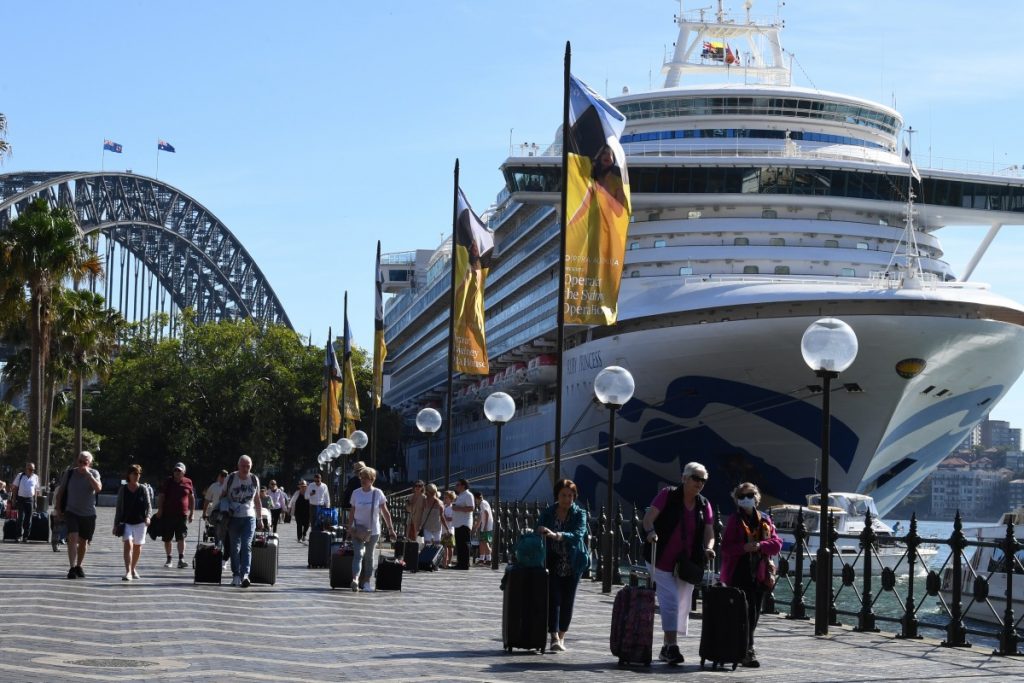
The fact is that a large proportion of cases came into Australia from America, Europe or cruise ships. Just how large? Up to April 30, the last day that Australian authorities published the chart “confirmed cases who acquired COVID-19 overseas by region” [49], a whopping 85% of all overseas acquired cases entered from the Americas, Europe or cruise ships! Given that Australian Department of Health data showed that up to April 30 there were in total 4,295 overseas acquired cases [50], this meant that 3,651 coronavirus-infected people entered Australia from Europe, America or cruise ships up to April 30. By contrast, the department’s infographic [49] showed that just 36 cases (a tiny 0.83% of all overseas acquired cases) entered from the entire North-East Asian region that includes China as well as South Korea and Japan! It is worth noting too that since arrivals from China had been carefully screened from the very start of the pandemic and that those still able to enter after the travel ban were forced to quarantine, arrivals from China did not cause any of the virus spread within Australia at all. The opposite was true, however, for arrivals from Europe and America. This is especially the case for the nearly two thousand infected people who arrived from these regions prior to the implementation of concentrated quarantining on March 29. Not only were they not required to even undergo home quarantining until mid-March (unlike arrivals from China, Iran and later South Korea), authorities did not even tell them to get tested until well into March even if they had symptoms! As a result many did not even know that they were infected until much later and, thus, passed the virus onto others. Other than for the likes of the upper class snobs returning from the high society Aspen party who refused directions to self-quarantine, this was of course not their fault at all. These people, just like the Ruby Princess passengers, were themselves victims of government policy. Not knowing that they were at high risk meant that they did not seek out early treatment meaning that their symptoms often became worse than they should have. Nevertheless, it was these thousands of COVID-19 cases arriving from Europe and America, along with infections caused by the Ruby Princess that became the source of most of the community transmission within Australia in its first wave.
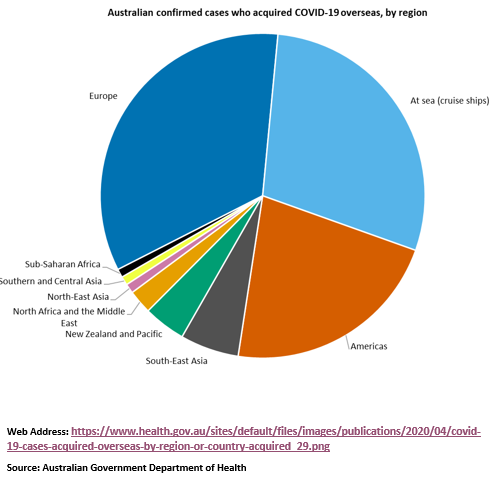
Australian authorities were well aware that COVID-19 was mostly entering from Europe and America. Why then did they not move to stop the importation of cases from these regions much sooner even as they maintained a travel ban on China well after she had almost completely suppressed the virus threat? Certainly there must have been some First World chauvinism – and a degree of underlying racial prejudice – at play. But that cannot fully explain a policy so at variance with the science. There was a factor still more sinister. For in order to achieve their goal of portraying Red China negatively, the Australian regime had to maintain their specific travel ban on only China for as long as possible. And then when they were compelled to have to bring in quarantining measures on other countries, they needed to ensure that this was implemented on as few countries as possible so that as much suspicious focus could still be maintained on China. Australia’s capitalist exploiting class are obsessed with demonising socialistic China because they want to make the Australian masses acquiesce to the Australian regime’s authoritarian moves to increase the powers of the ASIO secret police, further increase funding for spy agencies and arm their military with $270 billion of new long-range missiles.
In a major speech three weeks ago, foreign minister Marise Payne, stung by China calling out rampant racism within Australia, said that “disinformation” during the pandemic “will cost lives.” She was right! Except that disinformation is coming not from China but from the Australian regime – most notably through using the skewed application of country-specific quarantine measures – and is aimed at misleading people into thinking that the main danger of virus importation was from China. This distortion of pandemic policy to meet Cold War disinformation agendas cost the lives of dozens of Australians who would not have caught the disease from community transmission had authorities taken the scientifically mandated course of introducing earlier testing and quarantining of arrivals from the U.S., Italy, Germany, Britain etc. Let’s not forget, however, that it is not only the Morrison government that is culpable here. As Anthony Albanese has often remarked, “the Labor Party was at one with the government on this one.”
All the Ugliness Comes Out
Assisted by the daily negative stories about socialistic China spread by the tycoon and government-owned media, the false impression that the Morrison regime created that COVID-19 was introduced into Australia by arrivals from China was a shot in the arm for those already filled with white supremacist prejudice. These boosted-up racists then proceeded to unleash a horrific wave of physical attacks, abuse and threats of violence against ethnic Chinese people throughout Australia. Other people of Asian background have inevitably also been targeted.
In the face of the Chinese government warning its tourists and international students of the danger of racist attack in Australia, the Morrison government has tried to greatly downplay the threat to Asian people posed by racist violence. For those living in fear of copping such attacks this is infuriating to even be denied recognition of what they are going through. Of course, the government, the ALP opposition and top bureaucrats earlier did manage to on a rare occasion state that they were “appalled” by reports of racist assaults. However, the government and the opposition knew full well that such attacks would be the inevitable result of their earlier insistence on singling out China in the application of travel restrictions and of their later crude attempts to join hard right bigot Trump in blaming China for the pandemic. Their behaviour can be compared to that of state governments throughout this country who help throw tens of thousands of people into homelessness by selling off low-rent public housing … but then try to look good by providing some modest funding for homelessness services!
If the powers that be wanted to they could let the tyres out of the far-right drive to incite hatred against Asian people. They could simply explain to people the facts about where COVID-19 actually entered this country from. However, although Morrison did on one day casually drop the truth that a lot of cases were coming from the U.S., politicians from all the parliamentary parties refused to inform the public what a tiny proportion of overseas-acquired cases originated from China. Of course, it should not matter what country a disease is transmitted from. Viruses do not carry passports! To blame any country or people for the entry of a virus is no more valid than blaming the people of a country through which a cyclone that entered Australia had previously passed. However, in the context of there being a terrifying level of racist violence against people of Chinese appearance and the prior existence of widespread bigotry in Australia against Asian people, explaining the truth that arrivals from China did not spread the virus into the community at all is vitally needed. Instead, Australian authorities moved to actually censor their own infographic that proved this fact. From the beginning of May, the Department of Health, without explanation, suddenly stopped showing on its website the pie chart, “confirmed cases who acquired COVID-19 overseas by region.” Although largely ignored by most of the mainstream media, the department had been publishing the chart daily up to that time. Moreover, a few days after they stopped showing the chart, the department obliterated the chart from its own archives so that it could no longer be found unless someone had earlier saved the exact web address of the infographic! It is very likely that the Australian regime censored its own previously published data because it undermined their attempts to blame China for the virus spread here (see: https://www.trotskyistplatform.com/australian-data-proves-chinas-pandemic-response-success/). An inevitable by-product of that censorship is that it helped extreme racists to fill the vacuum of facts with divisive lies.
Now more than ever, people need to be told the facts that stand out from the Australian regime’s censored infographic: that just 0.7% of all overseas acquired cases in Australia arrived from Sub-Saharan Africa, just over 2% from North Africa and the Middle East and just 7.5% from all of Asia, whereas seventeen out of every twenty cases entered from Europe, America or cruise ships. These facts need to be known because racist politicians, Rupert Murdoch’s Sky News and right-wing shock jobs have been disgustingly blaming Asian, African, Muslim and Middle Eastern communities for the renewed virus spread in Melbourne. The entire mainstream media have fed into this racist upsurge by selectively choosing to report on the source country of an infected returned traveller almost exclusively only when that person happens to arrive from Asia, the Middle East and Africa, which is only where a small minority of cases have arrived from. Victoria’s Labor health minister, Jenny Mikakos, was guilty of the same thing last month when she stated that many of the COVID-infected returned travellers had arrived from India, Pakistan and Bangladesh [51]. Had she ever bothered to inform us earlier that the overwhelming majority of returned travellers infected with the virus then were arriving from Europe and America?! And although the Victorian ALP premier, in deference to his party’s working class base, has framed his hard lockdown of public housing residents in heavily migrant areas as a measure aimed to protect tenants, the brutally repressive manner in which it was implemented was an obvious play to redneck elements and will surely encourage white supremacist sentiments. The reality of all of these coded and open appeals to racist prejudices is that the horrific violence and abuse that rednecks have unleashed against Chinese and other East Asian people throughout this pandemic is likely to now also be turned against people of African, Muslim, South Asian, Pacific Islander and Middle Eastern backgrounds.
Meanwhile, two weeks ago, the Australian ruling class focussed on attacking yet another scapegoat for the spike in COVID-19 infections. Health minister Hunt ridiculously claimed that the mass anti-racist protests held last month were to blame [52]. This despite his own top health official saying the very opposite [53]. It is not surprising that the Australian government would make this accusation. After all, despite Hunt’s devious claim that he thought the “subject matter” of the protests “noble”, these very necessary protests were aimed not only against killer cops but against his racist, right-wing government and against racist state governments of all stripes. The truth is that not only have just four people who attended the Black Lives Matter rallies been found to have COVID-19, none of these people actually picked up the virus at the protests. The Black Lives Matter marches were outdoor events where dispersal of droplets into open air reduces the probability of virus spread. Far more dangerous is the crowding of people into indoor shops, bars and restaurants. Yet while Liberal and ALP federal and state governments tried desperately to quell the anti-racist protests aimed against them, they have been cavalier in allowing people to again crowd into dangerous, virus-spreading indoor environments.
So as you can see, the oft-repeated assertion by governments and media that “Australians have come together at this time of crisis” is simply not true. To be sure, many working class people, especially trade unionists shaped by an understanding of the need for collective action and solidarity, have responded to the crisis by upholding pandemic suppression regulations and by volunteering their time to help neighbours in need. However, many a capitalist boss has failed to provide adequate PPE for their workers or otherwise ensure COVID-safe workplace environments. Moreover, as soon as business owners were hit with any loss in revenue, these bosses did not hesitate to lay off or cut the shifts of the very workers whose toil over the years made these capitalists their fortunes. Meanwhile, some self-employed tradies, imbued with the individualistic spirit of small business owners, have continued to do jobs when pandemic restrictions have been in place and have done so in a way that recklessly ignores social distancing directives.
The dog-eat-dog nature of the capitalist economic system has created a self-centred culture that shows its most harmful side at times like these. Many people in Australia violated coronavirus social-distancing rules. This included not only beach goers but often people of wealth and power. There were not only the super-rich people returning to Victoria infected from the U.S. Aspen high society party but also Australian defence soldiers [54] and officers and recruits of the Australian Federal Police [55] who grossly violated pandemic response measures. Of course, the media and parliamentarians never highlighted that most of those violators happened to be white-skinned. Nor should they. However, when they then only focus on the ethnicity of a person who breaches social distancing guidelines when that person happens to be a person of colour, then these influencers of public opinion are consciously acting to foment racist hostility to already victimized communities.
For United Working Class Struggle!
All the prejudice and selfishness within capitalist Australian society has certainly come to the fore during this pandemic. However, something very different has been on display too. This has been evident over the last few days in the way that our trade unions, the Australian Muslim Social Services Agency, the Sikh Volunteers Australia and other community groups have organised food and supplies for locked down public housing residents in Melbourne. Such mutual aid amongst working class people and victimised ethnic groups points to the possibility of something much more powerful: working class people and all the oppressed uniting in action to oppose the racist scapegoating, fight for the measures actually needed to curb the virus spread and struggle to ensure that working class people are not made to carry the economic burden of the pandemic.

Photo credit: Victoran Trades Hall Council Facebook page
Right now we must especially stand by our sisters and brothers locked down in Melbourne public housing towers by demanding:
- Police out of the public housing neighbourhoods! Send in public health and community workers instead!
- The same quality food for locked down public housing tenants as those given to the more affluent returned travellers who had been quarantined in five-star hotels.
- For all locked down public housing tenants to be given the option of serving their quarantine in luxury five-star hotels with all expenses provided. Let them stay in more spacious, safer rooms! Let those forced into a hard lockdown enjoy good conditions instead of being stigmatised and forced to endure further hardship!
- For all electricity and gas charges to be removed until the end of winter. Let tenants turn on their heaters in full so that they can open the windows and let infected air disperse safely.
- No to discriminatory imposition of hard lockdowns on public housing tenants!
More broadly the workers movement and all our allies need to fight for:
- Mandatory temperature testing of everyone attending workplaces of more than two people.
- Paid pandemic sick leave for all workers (including those currently casuals) and the immediate conversion to permanency of all those currently employed as casuals.
- Secure jobs for all workers. That means demanding firstly that those companies still profitable – including supermarkets, construction firms and manufacturers – be forced to increase hiring at the expense of their profits; and secondly that the owners of previously profitable companies that are experiencing reduced operations be forced to pay their workers in full out of the massive profits that they have leached from these workers over the years.
Such a program can only be won through mass struggle against the capitalist exploiters and their governments. To advance this struggle it is vital that we discredit the capitalist regime by exposing just how flawed and anti-working class has been their response to the pandemic. The fact is that especially given that this land is both an island and a country with a low population density, other than for those who caught the virus abroad and could not be saved once they entered here, there should have either been just a tiny handful of COVID-19 deaths here or none at all. That people are now dying in a virus second wave is caused by Australian governments winding back social distancing measures too quickly, in deference to their capitalist masters, by their all-round neglect of the health and housing needs of public housing tenants and by the inability of the profit-driven system to ensure sufficient PPE for frontline workers. The first wave, on the other hand, was mainly caused by the Australian regime delaying introduction of mandatory testing and quarantining of arrivals from Europe, America and cruise ships and they did this in order to ensure that, for as long as possible, the focus of travel bans would be on China. As a result of this manoeuvre to create fear of socialistic China amongst the population, the virus was allowed to be brought into the community from Europe, America and cruise ships in large doses in late February and March and spread dangerously from there on in. Australia’s capitalist rulers caused dozens of people to die who otherwise would have been alive today – including the nineteen residents who tragically died at the Anglicare nursing home in Western Sydney and the eleven people who perished from the Ruby Princess-triggered North-West Tasmanian outbreak. Those close to the people who died should be furious that their precious family members and friends perished because the Australian regime distorted health policy to meet its Cold War agenda. So should all the workers who have been retrenched or lost shifts because the pandemic has been allowed to spread into the community far more widely than it should have.
References
- John M Barry, The site of origin of the 1918 influenza pandemic and its public health implications, Journal of Translational Medicine, Vol. 2, 20 January 2004, https://www.ncbi.nlm.nih.gov/pmc/articles/PMC340389/#
- Dian Septiari, Indonesia steers clear of COVID-19 resolution ‘politicization’, The Jakarta Post website, 21 May 2020, https://www.thejakartapost.com/news/2020/05/21/indonesia-steers-clear-of-covid-19-resolution-politicization.html
- Worldometers, Coronavirus, United States, https://www.worldometers.info/coronavirus/country/us/ (accessed 14 June 2020)
- Worldometers, Coronavirus, United Kingdom, https://www.worldometers.info/coronavirus/country/uk/ (accessed 14 June 2020)
- Worldometers, Coronavirus, China, https://www.worldometers.info/coronavirus/country/china/ (accessed 14 June 2020)
- Worldometers, Coronavirus, Australia, https://www.worldometers.info/coronavirus/country/australia/ (accessed 14 June 2020)
- Worldometers, Coronavirus, Vietnam, https://www.worldometers.info/coronavirus/country/viet-nam/ (accessed 14 June 2020)
- Oliver Hotham, No reason to doubt North Korea’s claims to be coronavirus-free, ambassador says, NK News website, 20 May 2020, https://www.nknews.org/2020/05/no-reason-to-doubt-north-koreas-claims-to-be-coronavirus-free-ambassador-says/
- Worldometers, Coronavirus, Laos, https://www.worldometers.info/coronavirus/country/laos/ (accessed 14 June 2020)
- Worldometers, Coronavirus, Mongolia, https://www.worldometers.info/coronavirus/country/mongolia/ (accessed 14 June 2020)
- Worldometers, Coronavirus, Bhutan, https://www.worldometers.info/coronavirus/country/bhutan/ (accessed 14 June 2020)
- Worldometers, Coronavirus, Rwanda, https://www.worldometers.info/coronavirus/country/rwanda/ (accessed 14 June 2020)
- Worldometers, Coronavirus, New Caledonia, https://www.worldometers.info/coronavirus/country/new-caledonia/ (accessed 14 June 2020)
- Worldometers, Coronavirus, Fiji, https://www.worldometers.info/coronavirus/country/fiji/ (accessed 14 June 2020)
- Worldometers, Coronavirus, Thailand, https://www.worldometers.info/coronavirus/country/thailand/ (accessed 14 June 2020)
- Kunal Gaurav, Australian PM Downplays Coronavirus Threat, Says ‘you Can Still Go To Cricket’, Republic World website, 27 February 2020, https://www.republicworld.com/world-news/rest-of-the-world-news/australian-pm-scott-morrison-downplays-coronavirus-threat.html
- Scott Morrison, Transcript – Press Conference, Prime Minister of Australia website, Home » Media » Transcript – Press Conference, 15 March 2020, https://www.pm.gov.au/media/transcript-press-conference
- Greg Hunt (Minister of Health), First confirmed case of novel coronavirus in Australia, Australian Government Department of Health website, Home > Ministers > The Hon Greg Hunt MP > Minister Hunt’s media, 25 January 2020, https://www.health.gov.au/ministers/the-hon-greg-hunt-mp/media/first-confirmed-case-of-novel-coronavirus-in-australia
- Mike Seccombe, What Morrison did wrong on coronavirus, The Saturday Paper website, Edition 293, 21-27 March 2020, https://www.thesaturdaypaper.com.au/news/politics/2020/03/21/what-morrison-did-wrong-coronavirus/15847092009555
- Greg Hunt (Minister of Health), Interview on the Today Show about coronavirus (COVID-19) 2 March 2020, Australian Government Department of Health website, Home > Ministers > The Hon Greg Hunt MP > Minister Hunt’s media, 11 March 2020, https://www.health.gov.au/ministers/the-hon-greg-hunt-mp/media/interview-on-the-today-show-about-coronavirus-covid-19
- Greg Hunt (Minister of Health), Interview on Sky News First Edition about coronavirus (COVID-19), Australian Government Department of Health website, Home > Ministers > The Hon Greg Hunt MP > Minister Hunt’s media, 4 March 2020, https://www.health.gov.au/ministers/the-hon-greg-hunt-mp/media/interview-on-sky-news-first-edition-about-coronavirus-covid-19
- Greg Hunt (Minister of Health), Interview on the Today Show about coronavirus (COVID-19) 5 March 2020, Australian Government Department of Health website, Home > Ministers > The Hon Greg Hunt MP > Minister Hunt’s media, 5 March 2020, https://www.health.gov.au/ministers/the-hon-greg-hunt-mp/media/interview-on-the-today-show-about-coronavirus-covid-19-5-march-2020
- Greg Hunt (Minister of Health), Interview on the Today Show about coronavirus (COVID-19) 11 March 2020, Australian Government Department of Health website, Home > Ministers > The Hon Greg Hunt MP > Minister Hunt’s media, 11 March 2020, https://www.health.gov.au/ministers/the-hon-greg-hunt-mp/media/interview-on-the-today-show-about-coronavirus-covid-19-11-march-2020
- PolitiFact and Jon Greenberg, ‘We have it totally under control.’ A timeline of President Donald Trump’s response to the coronavirus pandemic, Poynter website, 24 March 2020, https://www.poynter.org/fact-checking/2020/we-have-it-totally-under-control-a-timeline-of-president-donald-trumps-response-to-the-coronavirus-pandemic/
- Adam Serwer, The Coronavirus Was an Emergency Until Trump Found Out Who Was Dying, The Atlantic website, 8 May 2020, https://www.theatlantic.com/ideas/archive/2020/05/americas-racial-contract-showing/611389/
- Katherine Dunn and Jeremy Kahn, Even while canceling mass gatherings, the U.K. is still aiming for deliberate ‘herd immunity’, Fortune website, 14 March 2020, https://fortune.com/2020/03/14/coronavirus-uk-cases-herd-immunity-covid-19/
- Benjamin Mueller, As Europe Shuts Down, Britain Takes a Different, and Contentious, Approach, The New York Times, 13 March 2020, https://www.nytimes.com/2020/03/13/world/europe/coronavirus-britain-boris-johnson.html
- UK government, Coronavirus (COVID-19) in the UK, https://coronavirus.data.gov.uk/ (accessed 20 June 2020)
- Worldometers, Coronavirus, https://www.worldometers.info/coronavirus/#countries (accessed 20 June 2020)
- Worldometers, Coronavirus, Sweden, https://www.worldometers.info/coronavirus/country/sweden/ (accessed 30 June 2020)
- Stephanie Bedo, Should we be keeping schools open?, The Chronicle, 17 March 2020, https://www.thechronicle.com.au/news/why-its-smart-to-keep-schools-open/3973701/
- Australian Government Department of Health, Coronavirus (COVID-19) at a glance – 1 June 2020, Australian Government Department of Health website, 2 June 2020, https://www.health.gov.au/sites/default/files/documents/2020/06/coronavirus-covid-19-at-a-glance-1-june-2020.pdf
- Australian Government Department of Health, Coronavirus (COVID-19) at a glance – 18 May 2020, Australian Government Department of Health website, 19 May 2020, https://www.health.gov.au/sites/default/files/documents/2020/05/coronavirus-covid-19-at-a-glance-18-may-2020-coronavirus-covid-19-at-a-glance-infographic.pdf
- ABC News, Police arrest protesters outside public housing estate, MSN News website, 8 July 2020, https://www.msn.com/en-au/news/other/police-arrest-protesters-outside-public-housing-estate/vp-BB16sg71
- Margaret Simons and Matilda Boseley, ‘They change the rules’: confusion reigns for frightened and stressed Melbourne public housing residents, The Guardian Australia website, 7 July 2020, https://www.theguardian.com/australia-news/2020/jul/07/they-change-the-rules-confusion-reigns-for-frightened-and-stressed-melbourne-public-housing-residents
- Xinhua, City landmarks across China light up in solidarity with Wuhan, Xinhua website, 9 February 2020, http://www.xinhuanet.com/english/2020-02/09/c_138768233.htm
- Xinhua, Xi Focus: Xi vows to win people’s war against novel coronavirus, Xinhua website, 11 February 2020, http://www.xinhuanet.com/english/2020-02/11/c_138771934.htm
- Melissa Clarke, Healthcare workers fighting coronavirus to receive millions of new face masks after Australia’s stocks are boosted, ABC News website, 18 April 2020, https://www.abc.net.au/news/2020-04-18/coronavirus-ppe-australia-gets-58-million-face-masks/12161922
- Worldometers, Coronavirus, South Korea, https://www.worldometers.info/coronavirus/country/south-korea/ (accessed 27 June 2020)
- Worldometers, Coronavirus, Italy, https://www.worldometers.info/coronavirus/country/italy/ (accessed 27 June 2020)
- Australian Government Department of Health, Deputy Chief Medical Officer’s interview on ABC Radio National about coronavirus (COVID-19), Australian Government Department of Health website, 28 February 2020, https://www.health.gov.au/news/deputy-chief-medical-officers-interview-on-abc-radio-national-about-coronavirus-covid-19
- Worldometers, Coronavirus, Iran, https://www.worldometers.info/coronavirus/country/iran/ (accessed 27 June 2020)
- Australian Government Department of Health, Chief Medical Officer’s interview on ABC Radio Melbourne, Australian Government Department of Health website, 9 March 2020, https://www.health.gov.au/news/chief-medical-officers-interview-on-abc-radio-melbourne
- Worldometers, Coronavirus, Germany, https://www.worldometers.info/coronavirus/country/germany/ (accessed 27 June 2020)
- Worldometers, Coronavirus, Spain, https://www.worldometers.info/coronavirus/country/spain/ (accessed 27 June 2020)
- Cameron Houston, The cough that crossed the globe: Andrew Abercrombie’s ill-fated party, Brisbane Times website, 3 April 2020, https://www.brisbanetimes.com.au/politics/victoria/the-cough-that-crossed-the-globe-andrew-abercrombie-s-ill-fated-party-20200403-p54gp9.html
- Dana McCauley and Cameron Houston, ‘Throw the book at them’: Health Minister addresses Aspen controversy, The Age website, 31 March 2020, https://www.theage.com.au/national/victoria/throw-the-book-at-them-health-minister-addresses-aspen-controversy-20200331-p54frd.html
- Merran Hitchick, ‘Flabbergasted’: Melbourne doctor with coronavirus symptoms continued seeing patients, The Guardian Australia website, 7 March 2020, https://www.theguardian.com/world/2020/mar/07/flabbergasted-melbourne-doctor-with-coronavirus-symptoms-continued-seeing-patients
- Australian Government Department of Health, Australian confirmed cases who acquired COVID-19 overseas, by region, 30 April 2020, https://www.health.gov.au/sites/default/files/images/publications/2020/04/covid-19-cases-acquired-overseas-by-region-or-country-acquired_29.png (accessed 30 June 2020)
- Australian Government Department of Health, Coronavirus (COVID-19) at a glance – 30 April 2020, Australian Government Department of Health website, 2 May 2020, https://www.health.gov.au/resources/publications/coronavirus-covid-19-at-a-glance-30-april-2020
- Will Jackson and Leonie Thorne, Why is Victoria experiencing an increase in coronavirus cases and other states aren’t?, ABC News website, 18 June 2020, https://www.abc.net.au/news/2020-06-18/why-is-victoria-experiencing-an-increase-in-cases/12366884
- Nick Baker, Greg Hunt says Black Lives Matter protests contributed to Melbourne coronavirus spike, SBS website, 25 June 2020, https://www.sbs.com.au/news/greg-hunt-says-black-lives-matter-protests-contributed-to-melbourne-coronavirus-spike
- Nick Baker, Did Australia’s Black Lives Matter protests cause a spike in COVID-19 cases?, SBS website, 23 June 2020, https://www.sbs.com.au/news/did-australia-s-black-lives-matter-protests-cause-a-spike-in-covid-19-cases
- 9 News, Australian Army soldiers busted attending Queensland house party over Easter weekend, 9 News website, 15 April 2020, https://www.9news.com.au/national/townsvillebased-australian-army-soldiers-busted-over-easter-weekend-party-amid-covid-19-restrictions/5fb3dfcd-5baa-4196-a4ce-1788a4fe74e9
- Andrew Greene and Georgia Hitch, AFP recruits and staff sanctioned for breaching coronavirus social-distancing rules at college party, ABC News website, 7 May 2020, https://www.abc.net.au/news/2020-05-07/coronavirus-afp-recruits-sanctions-after-illegal-party-canberra/12223808
